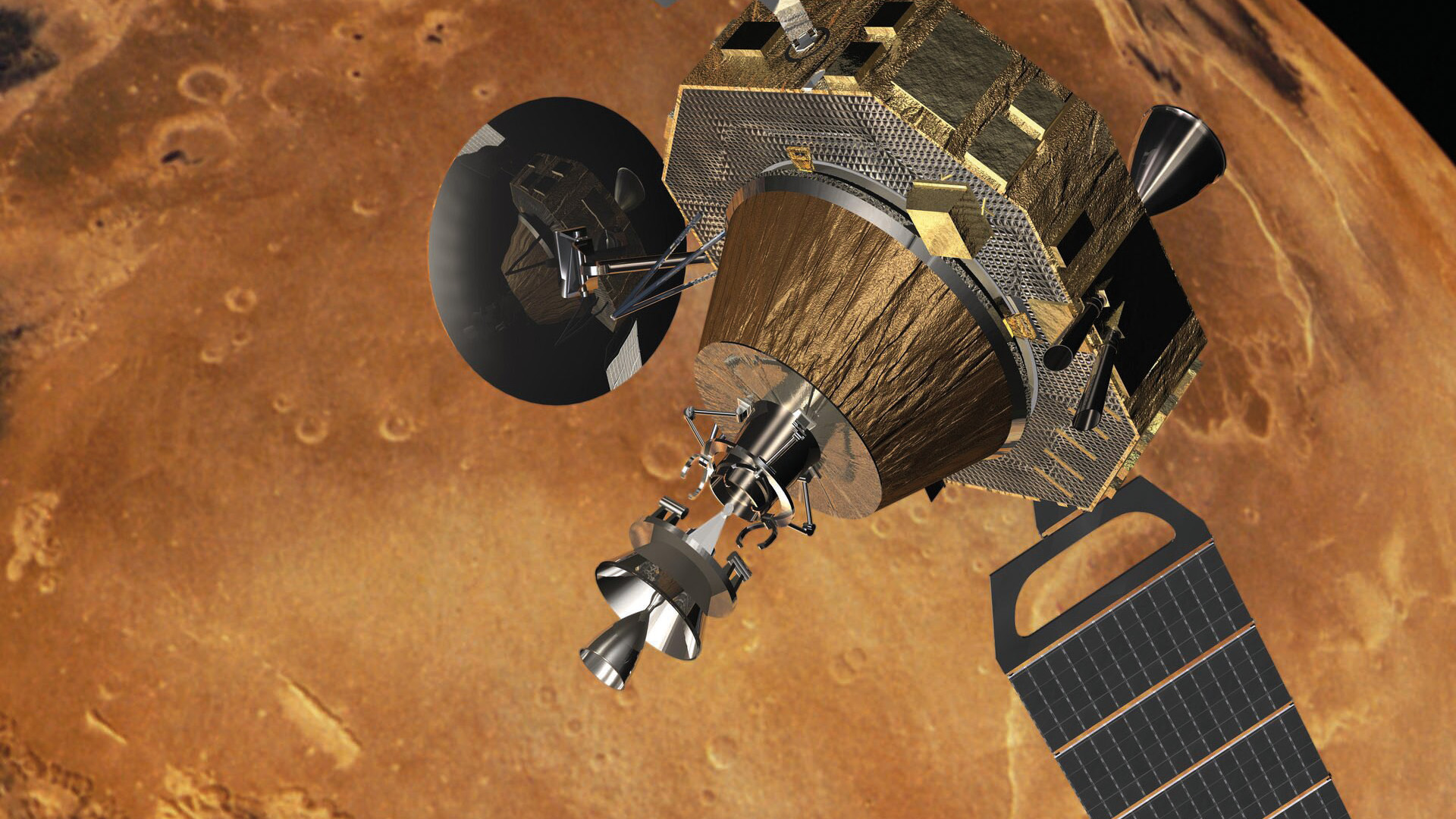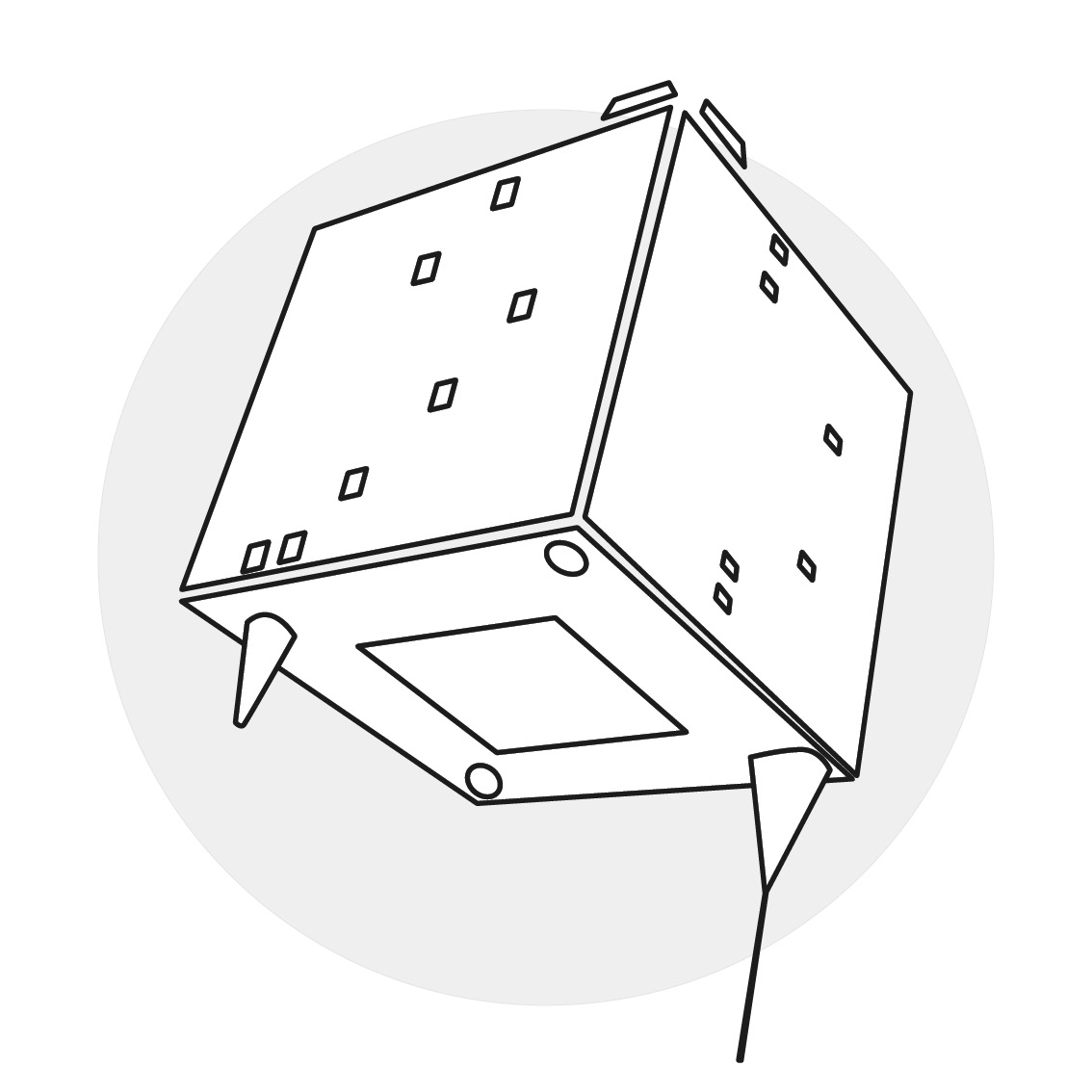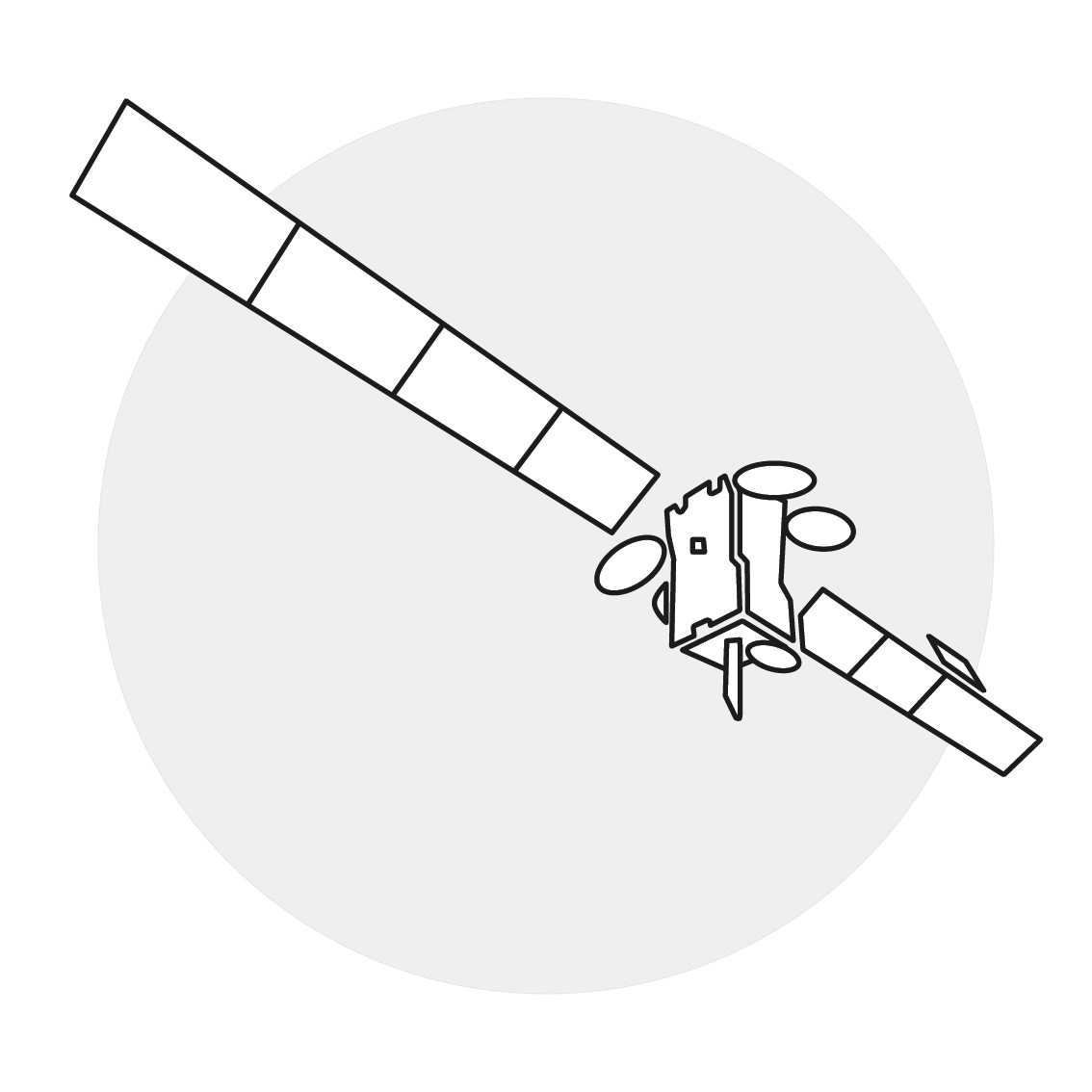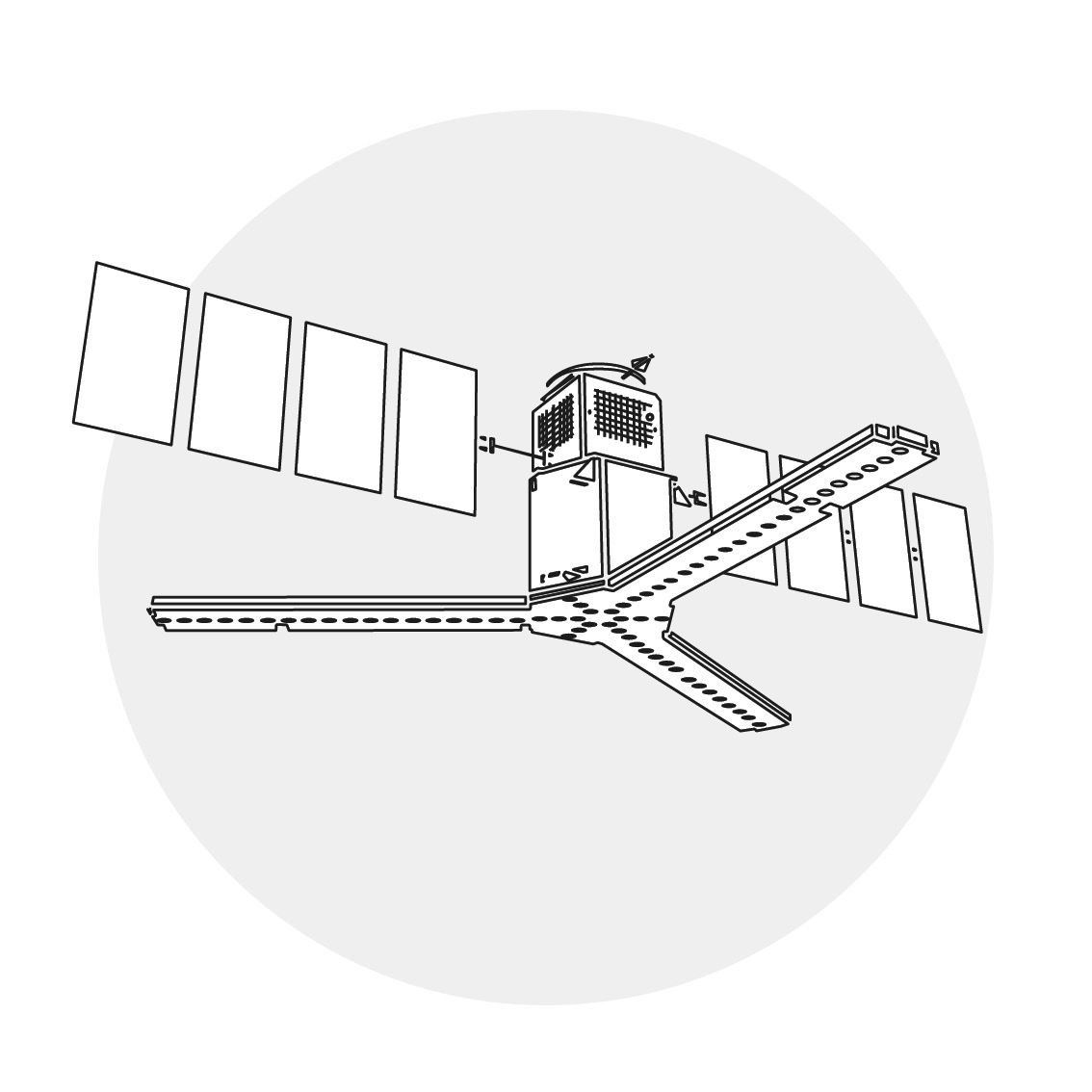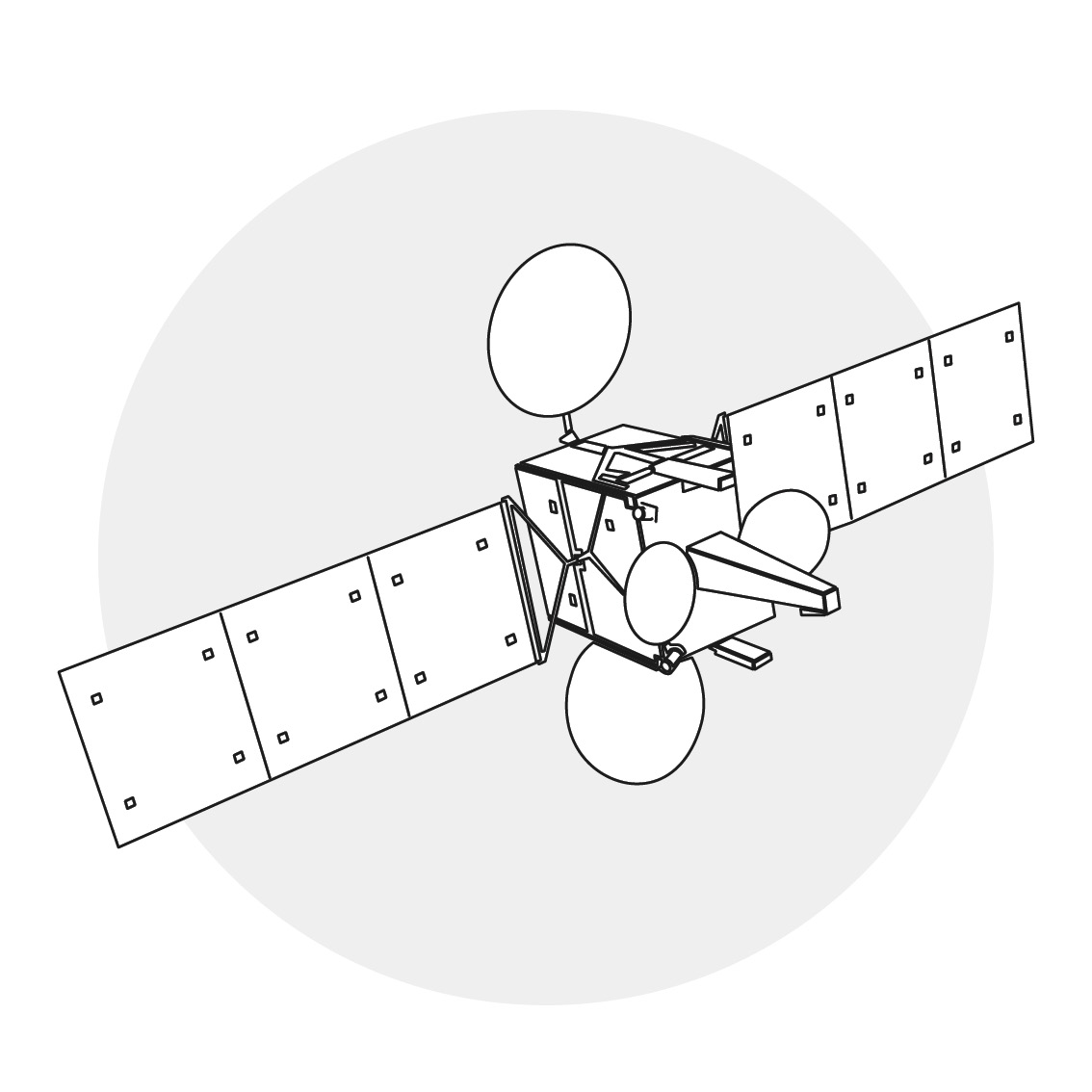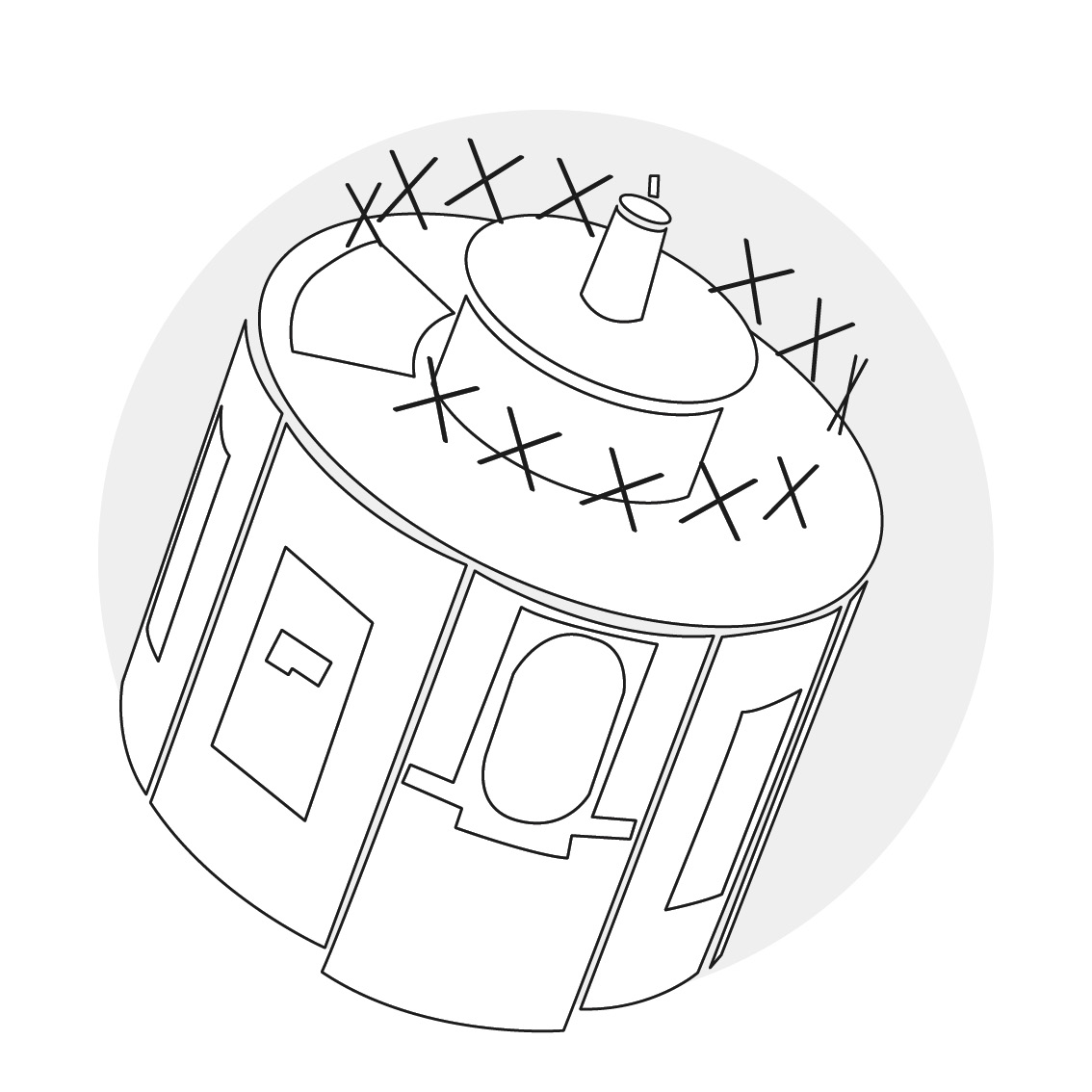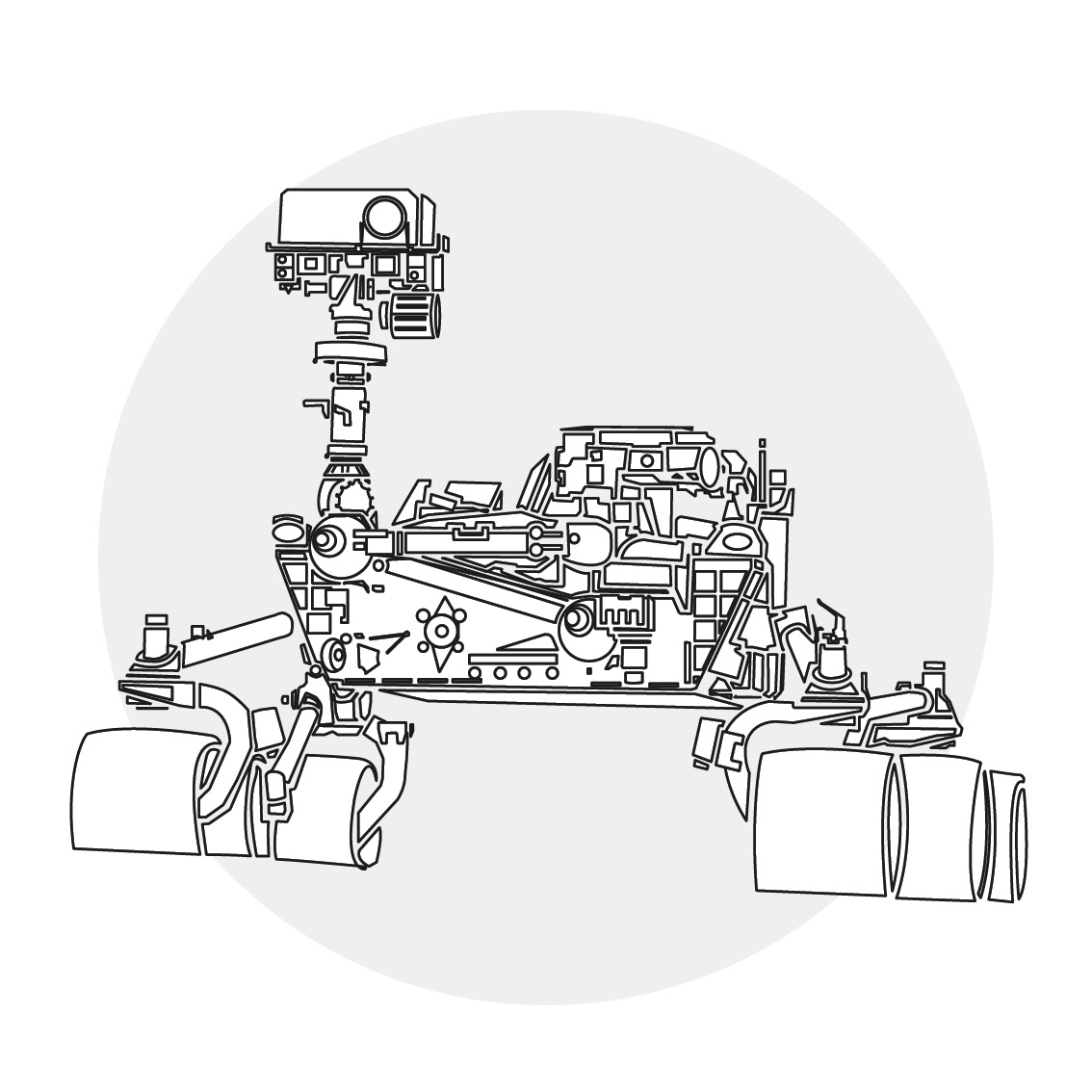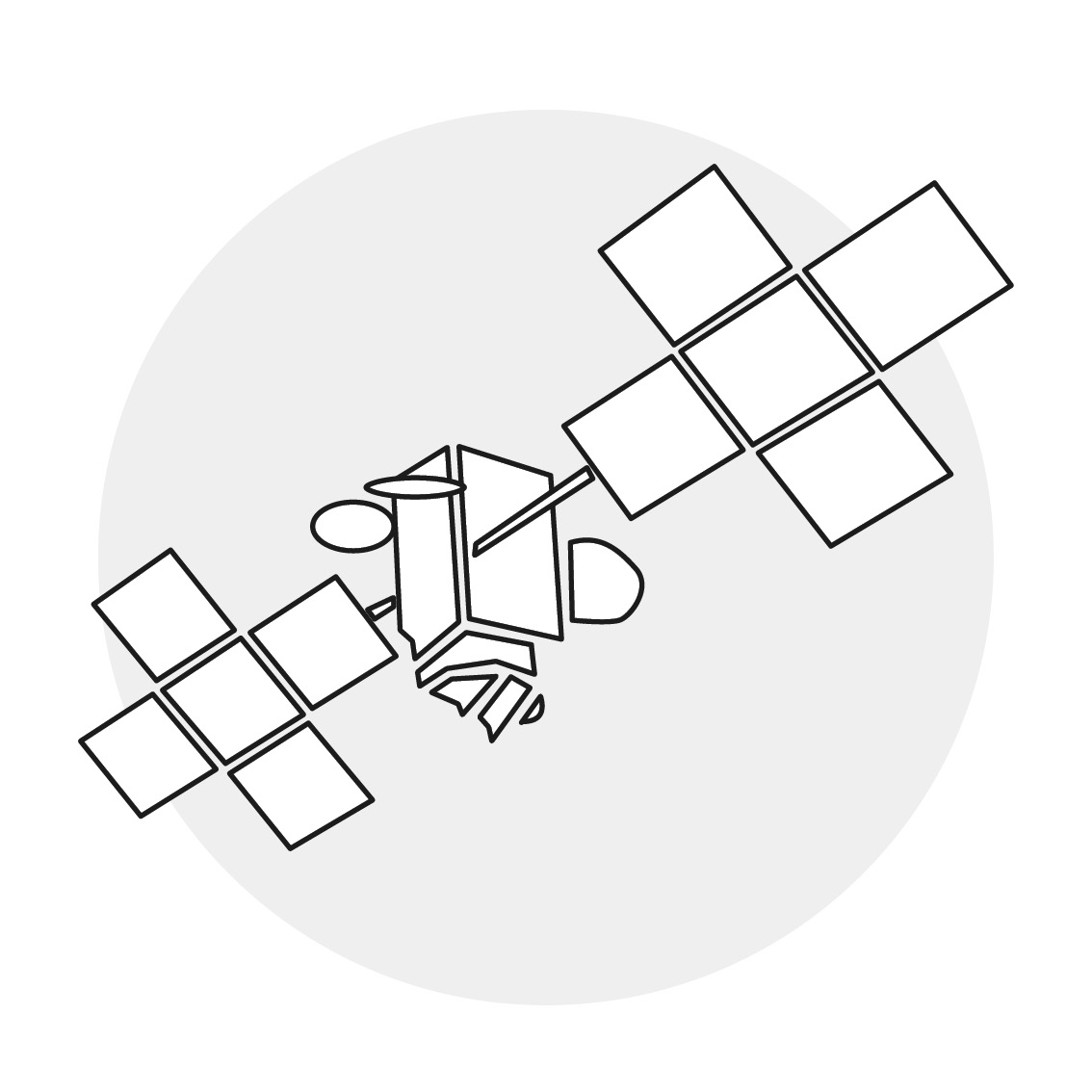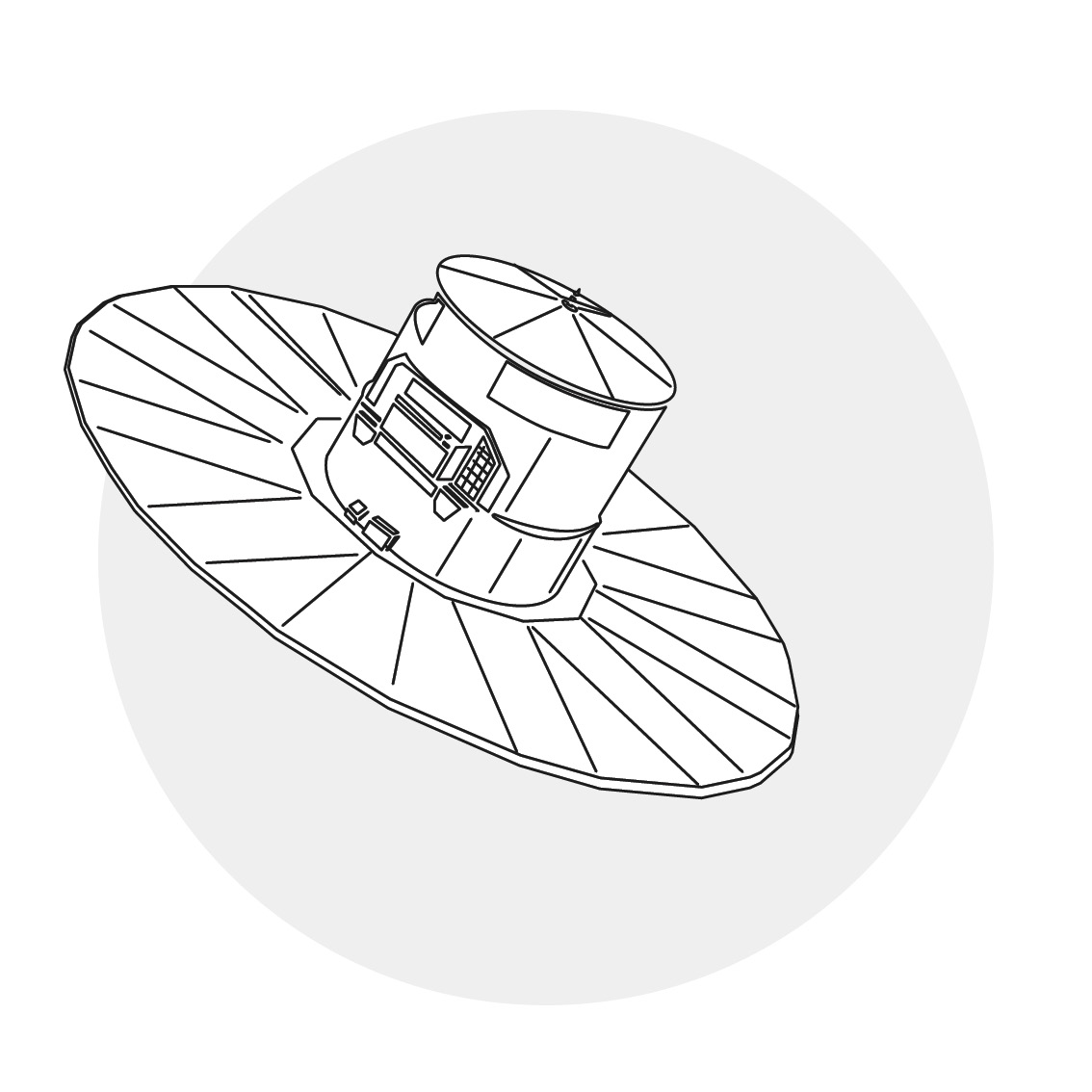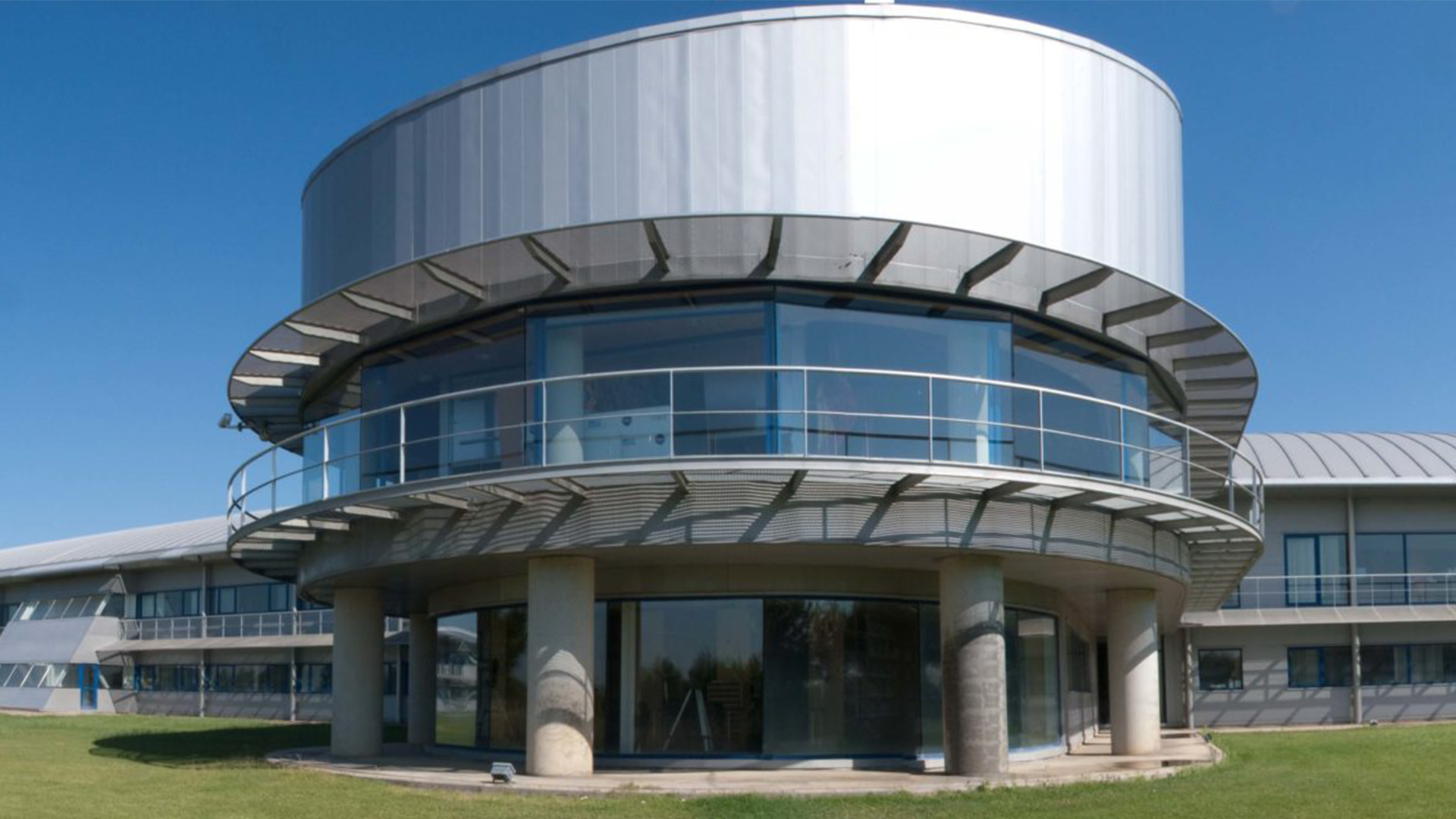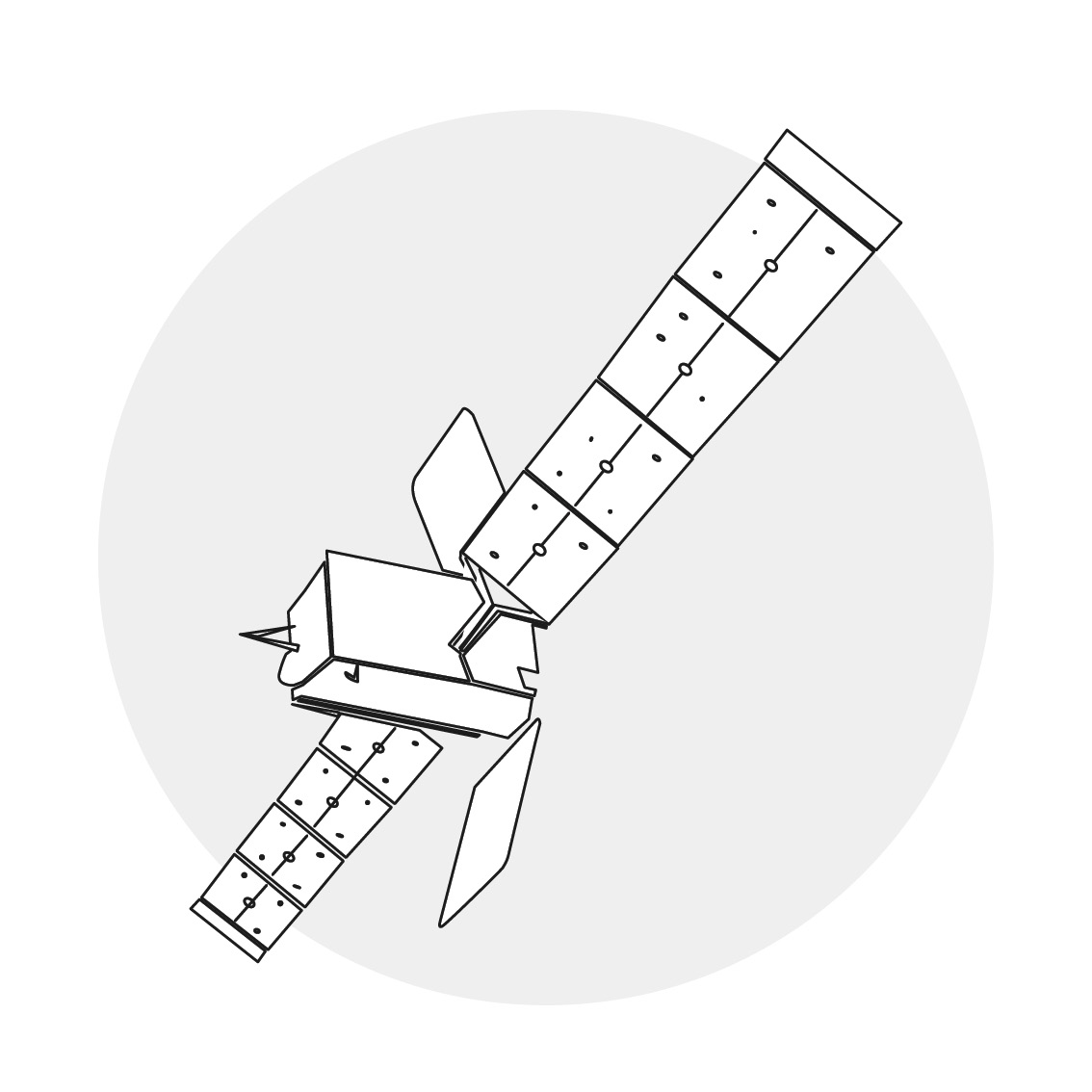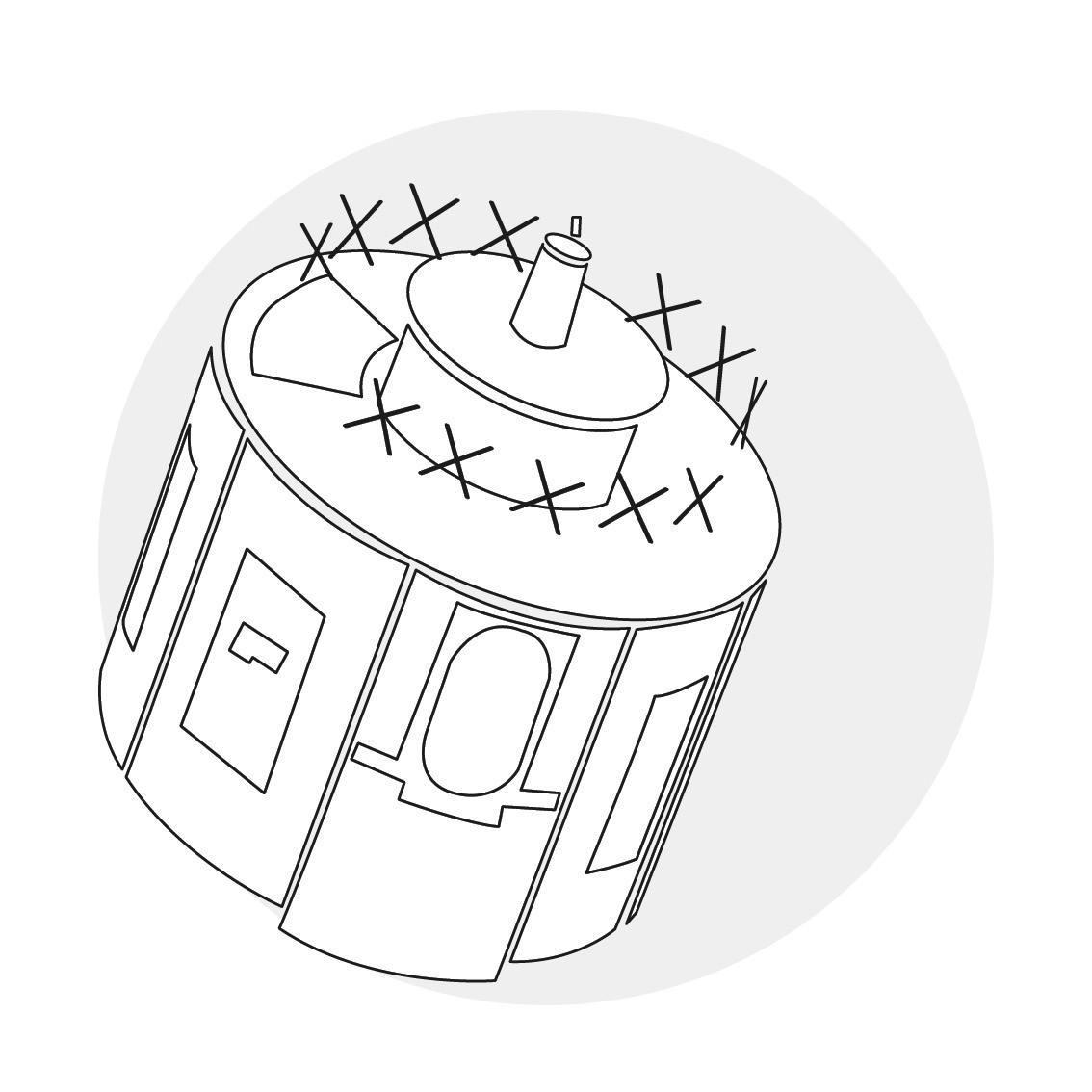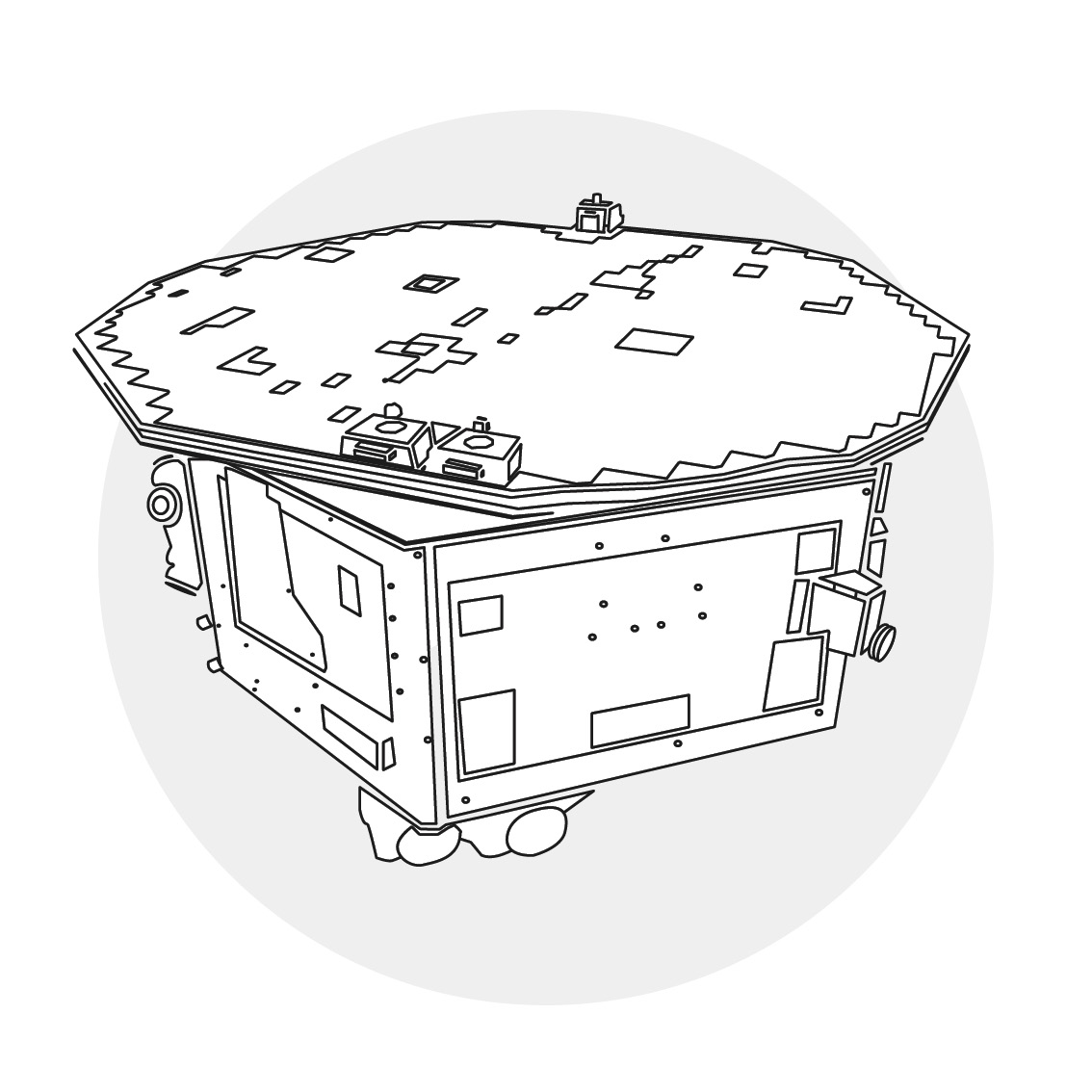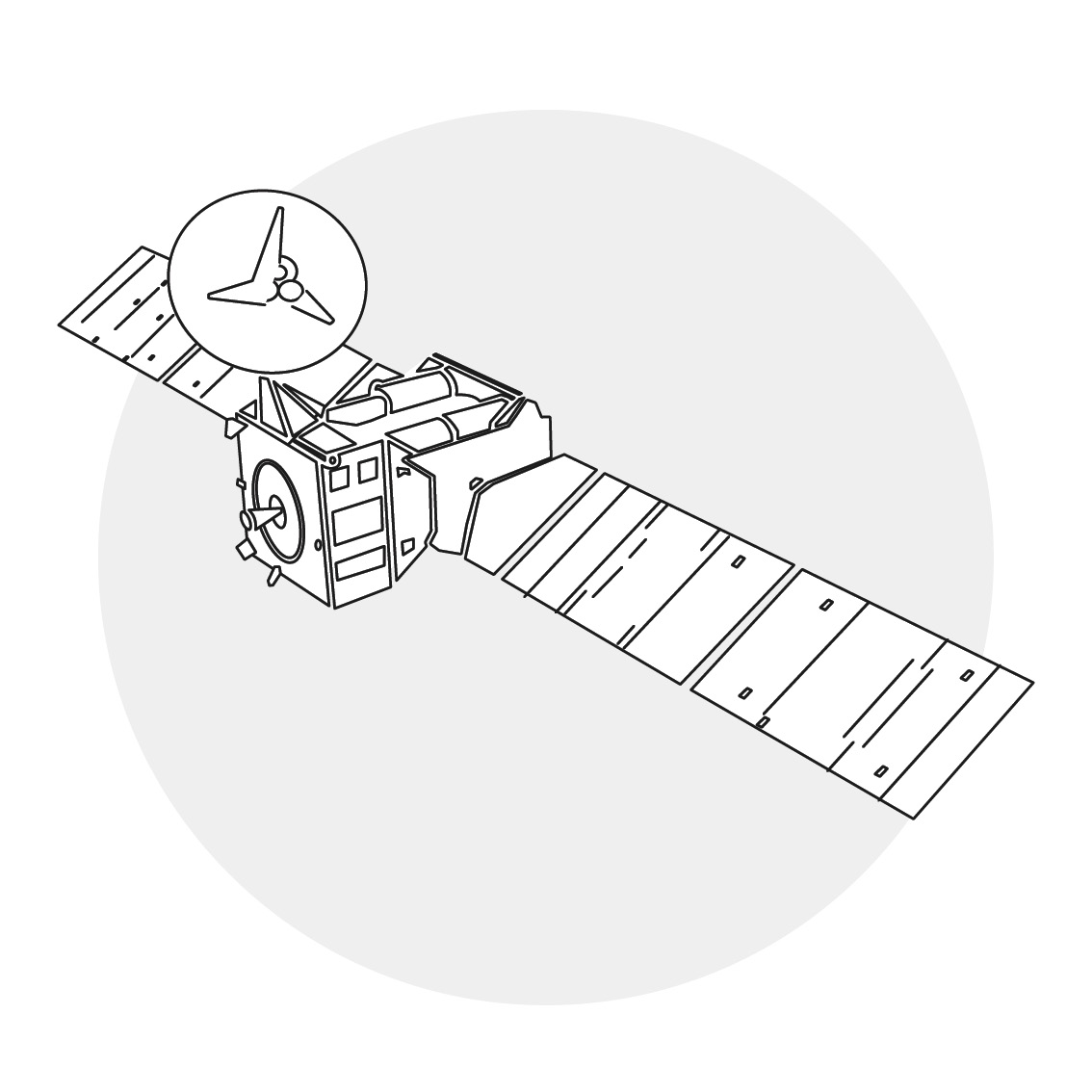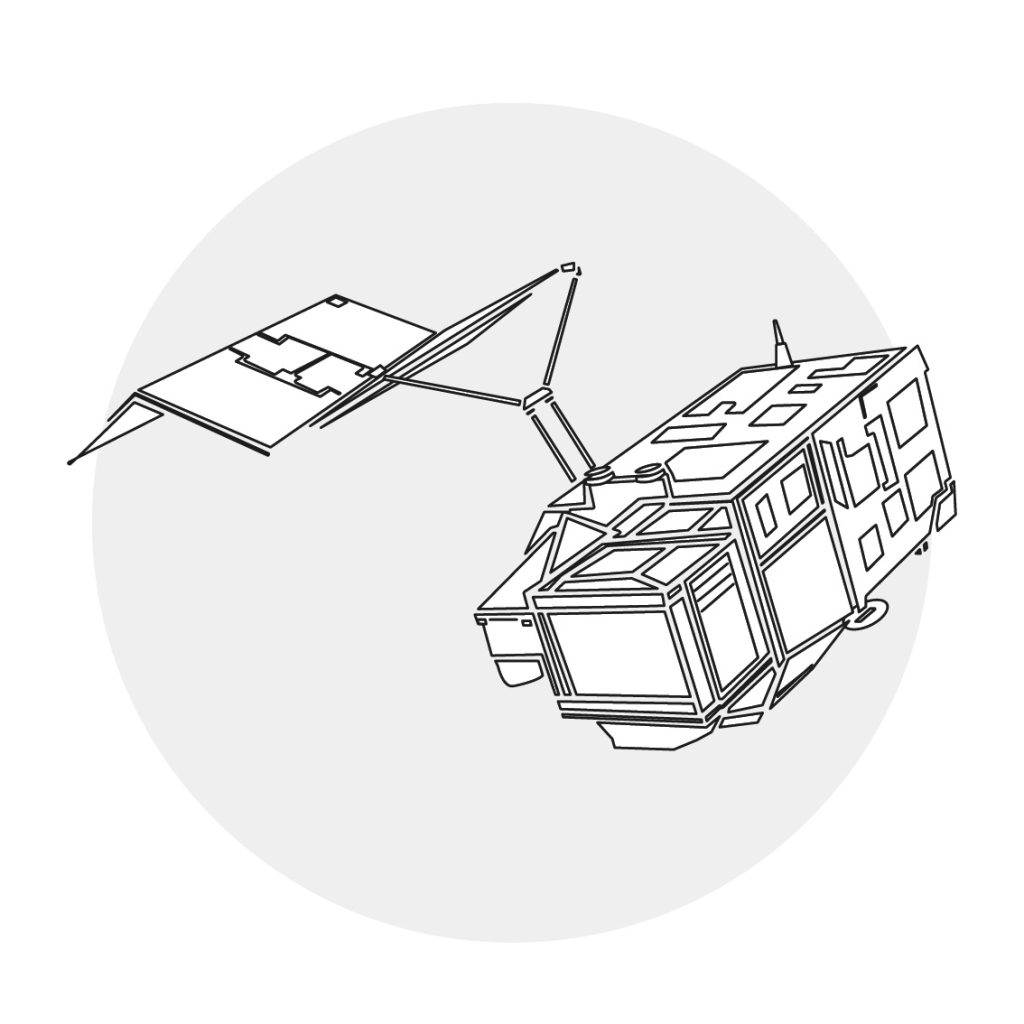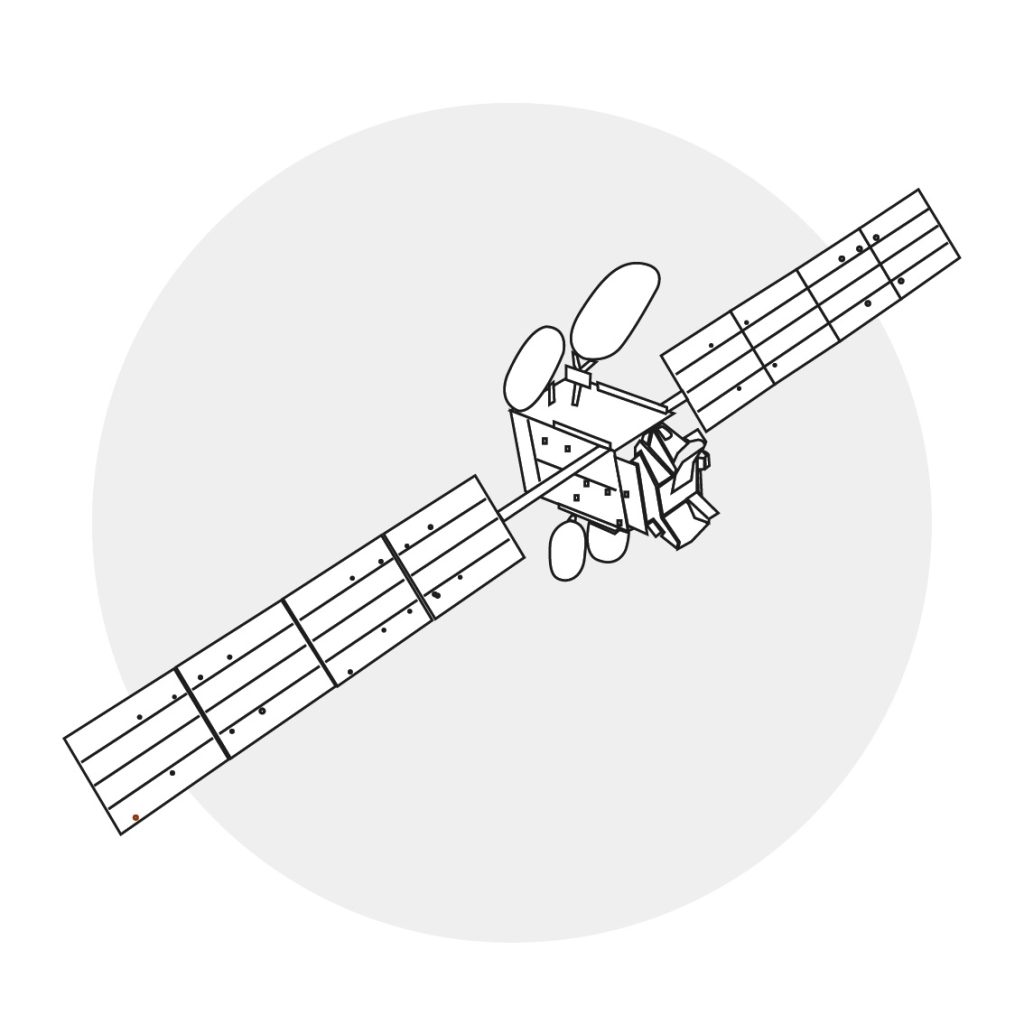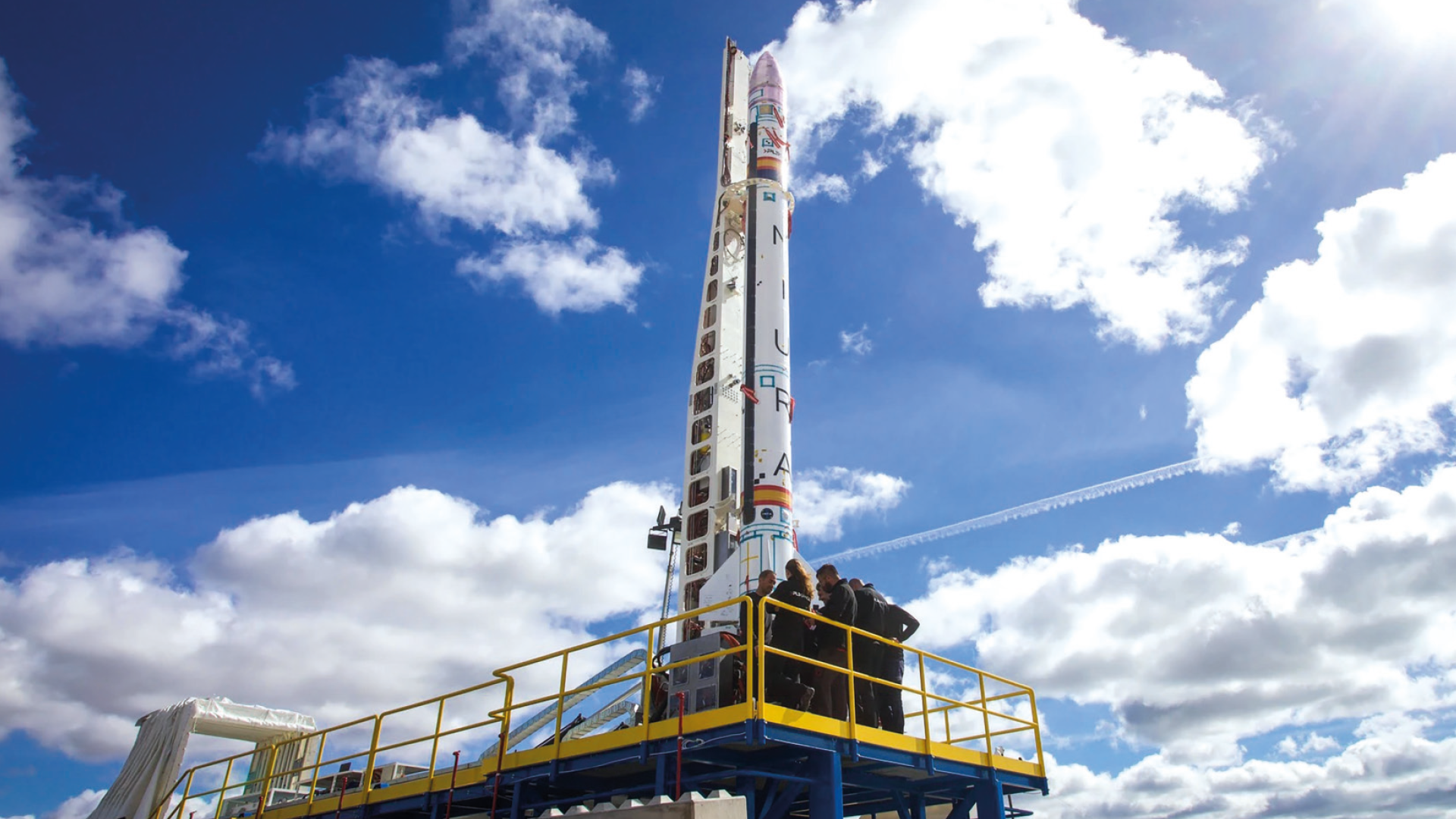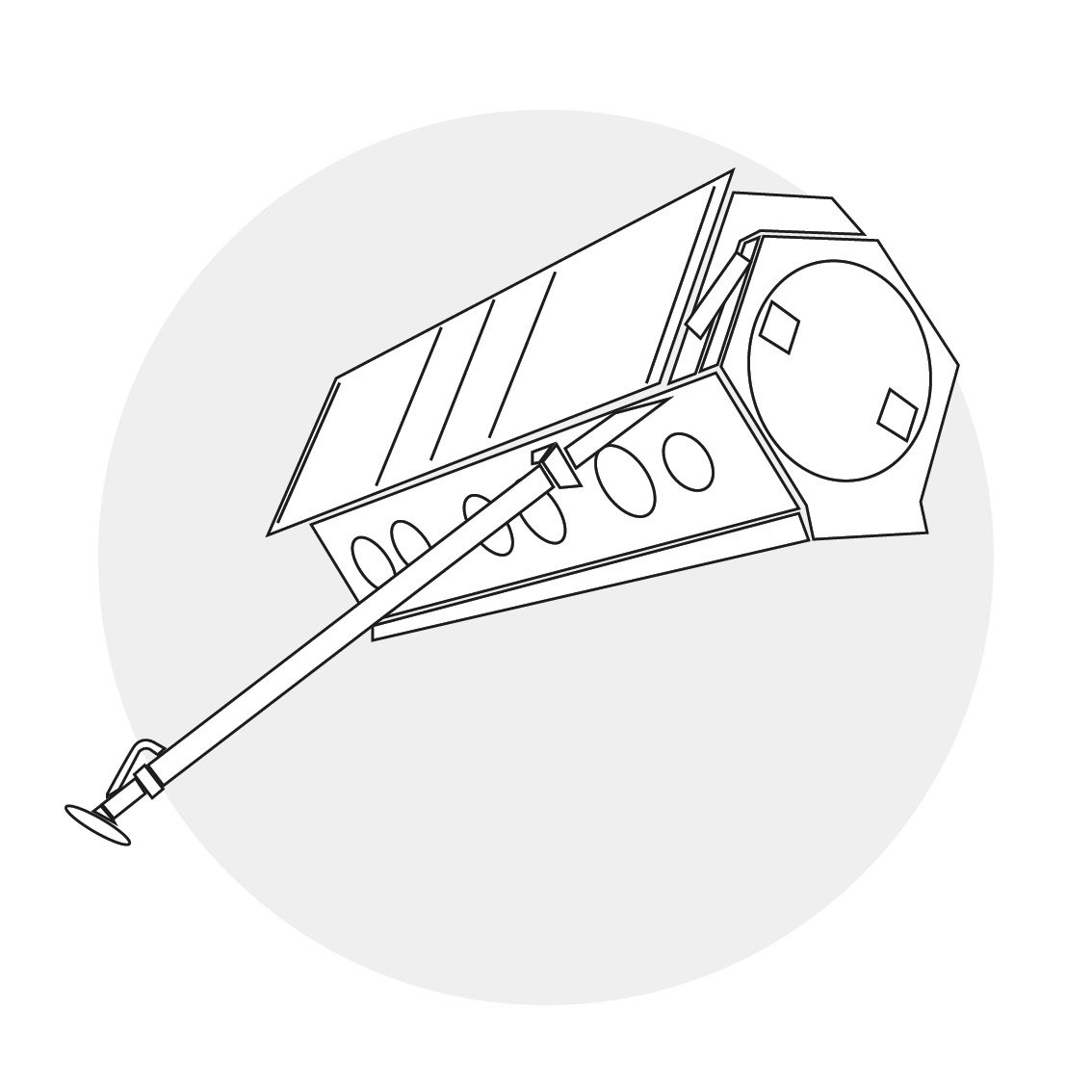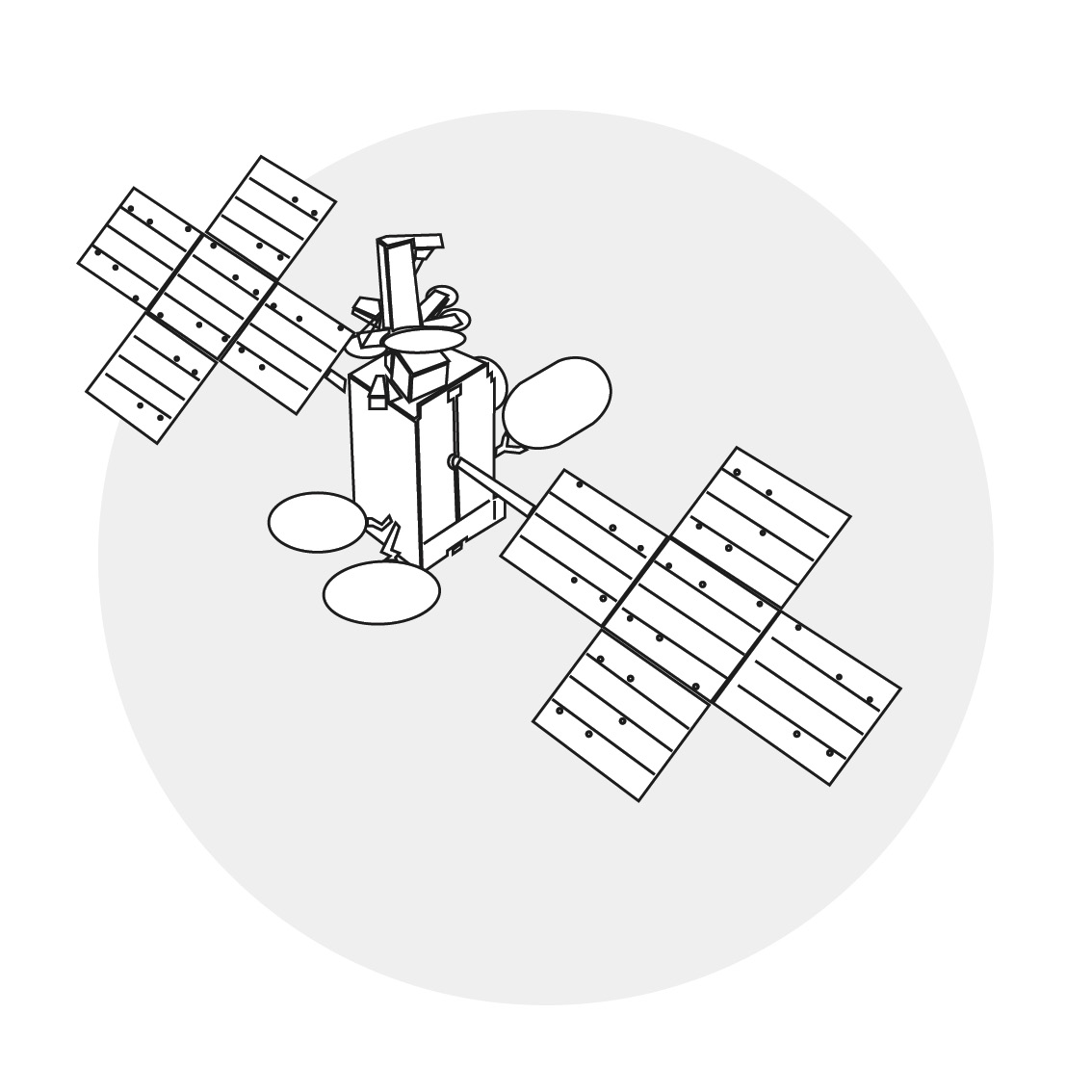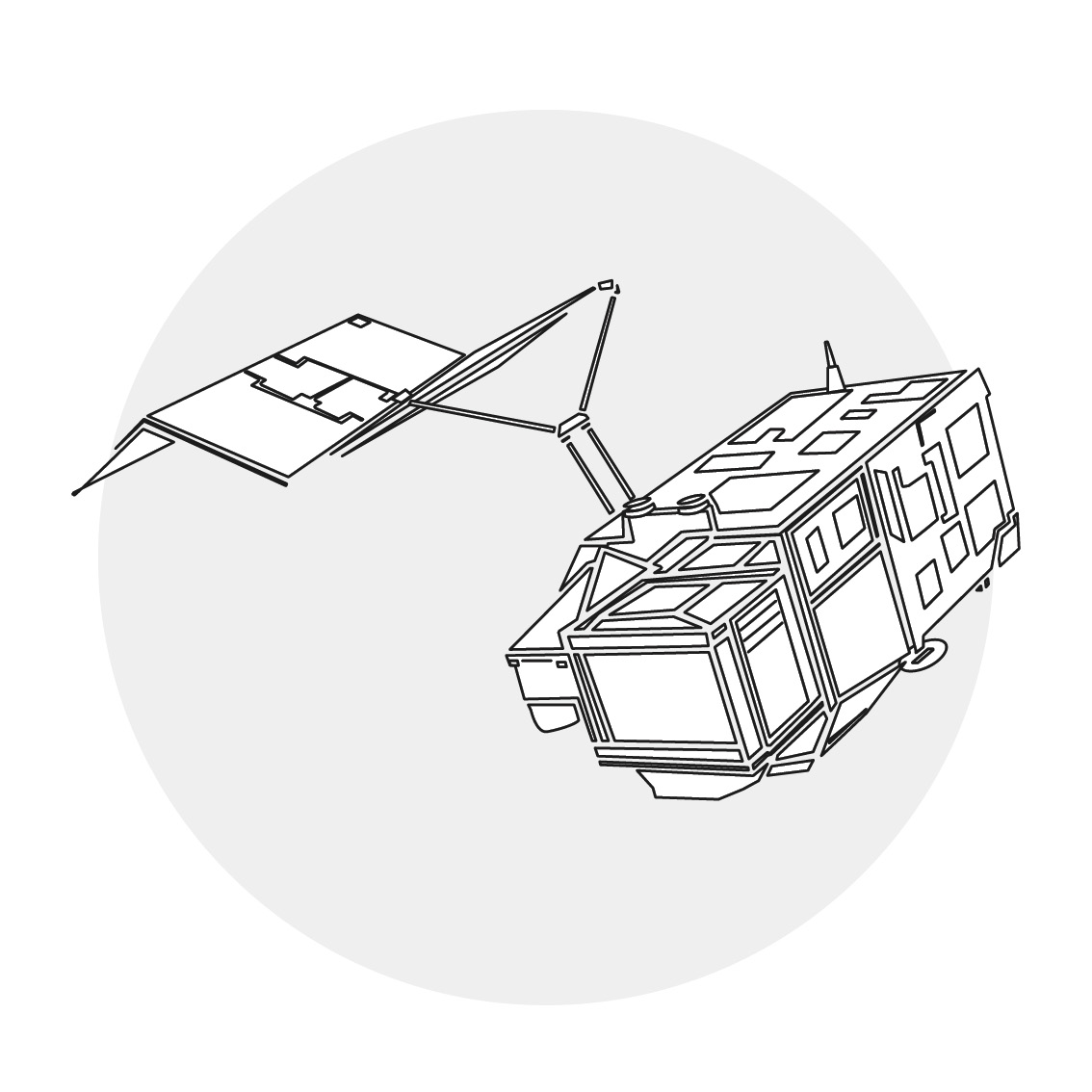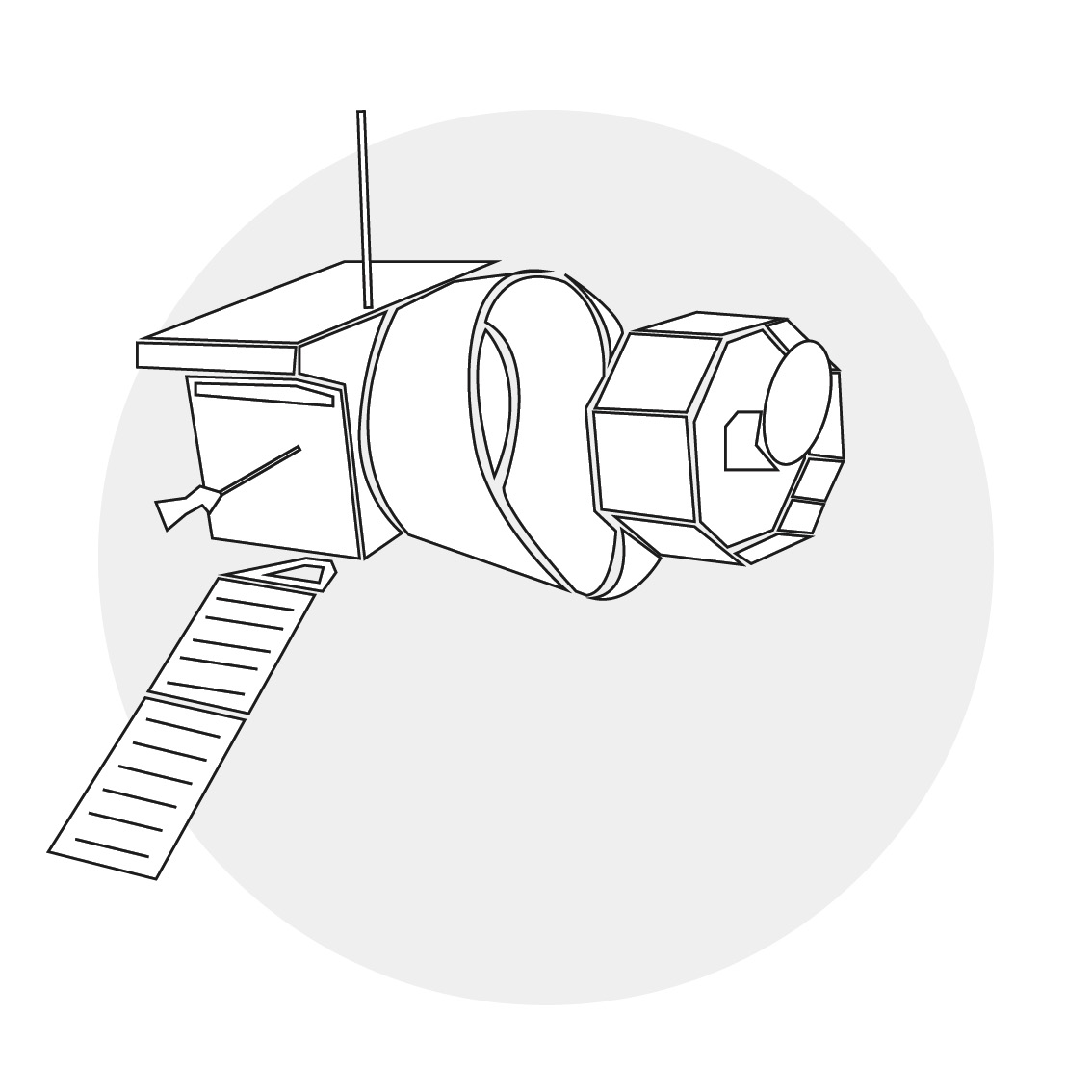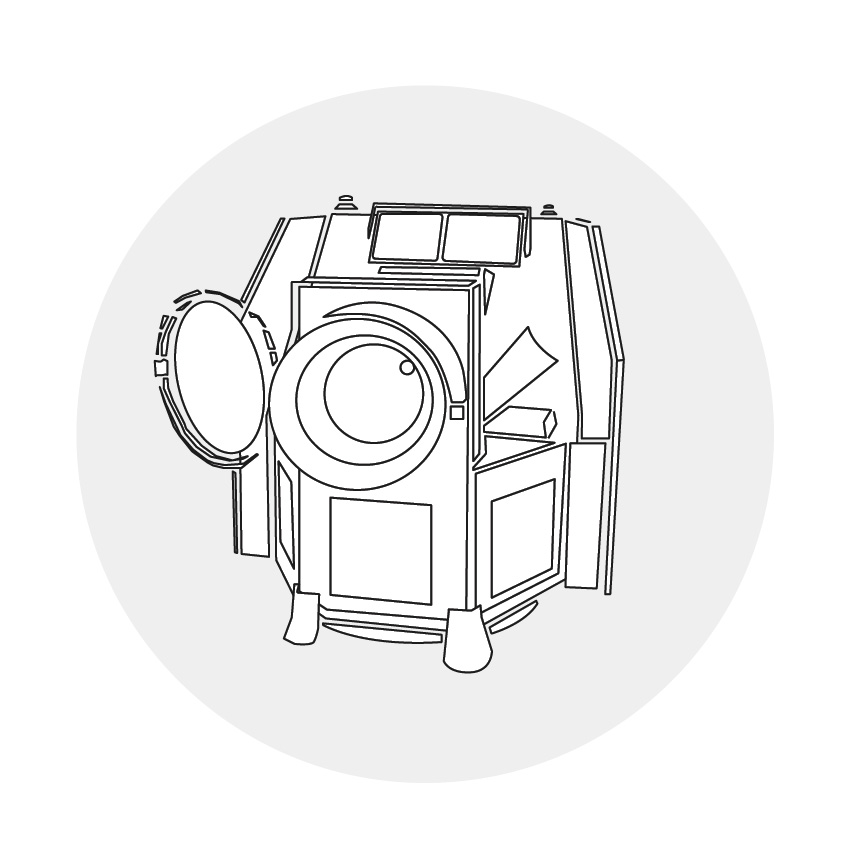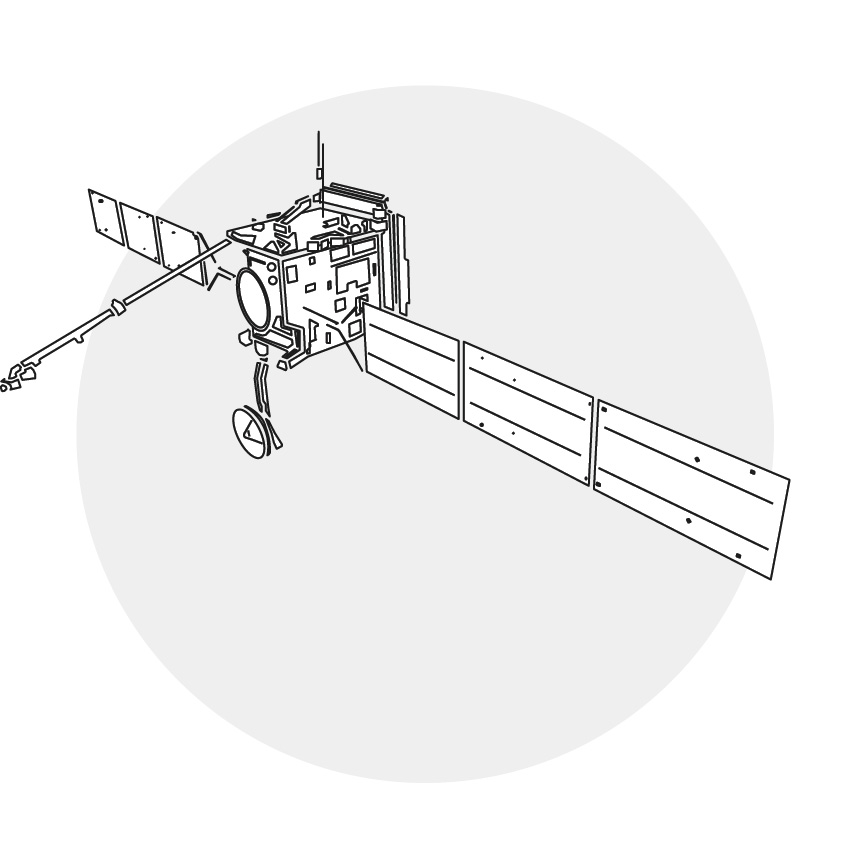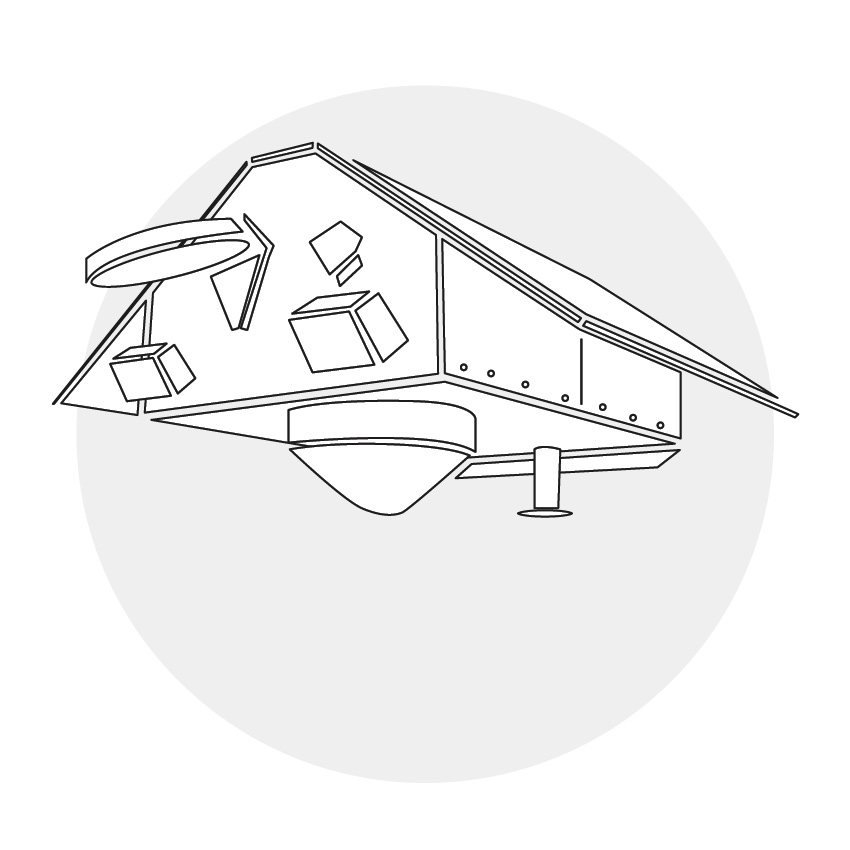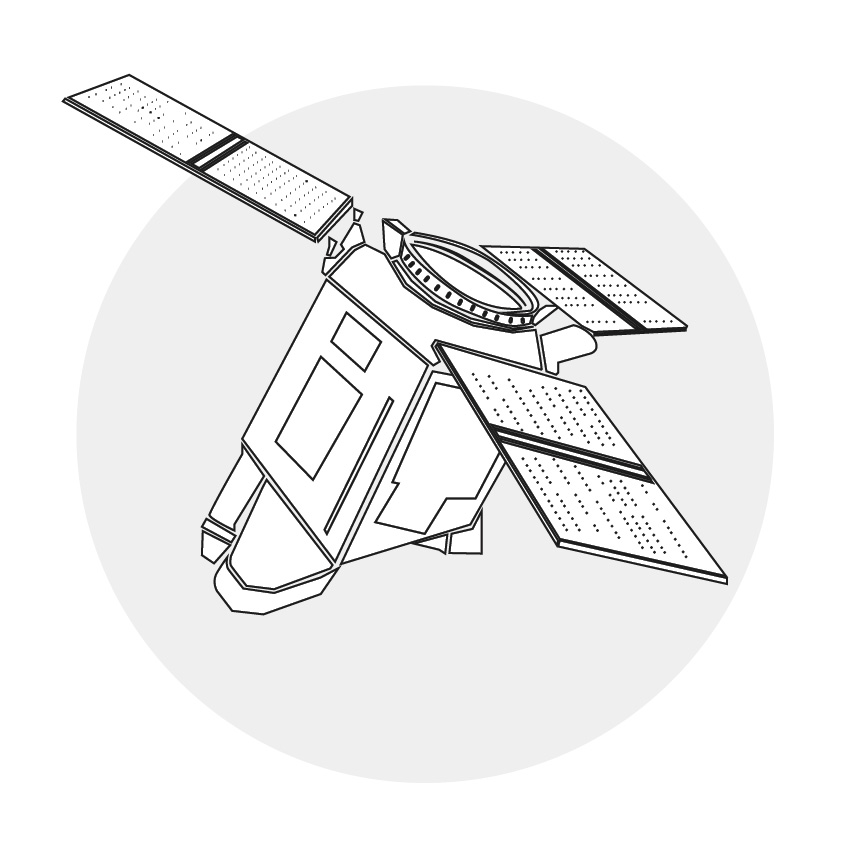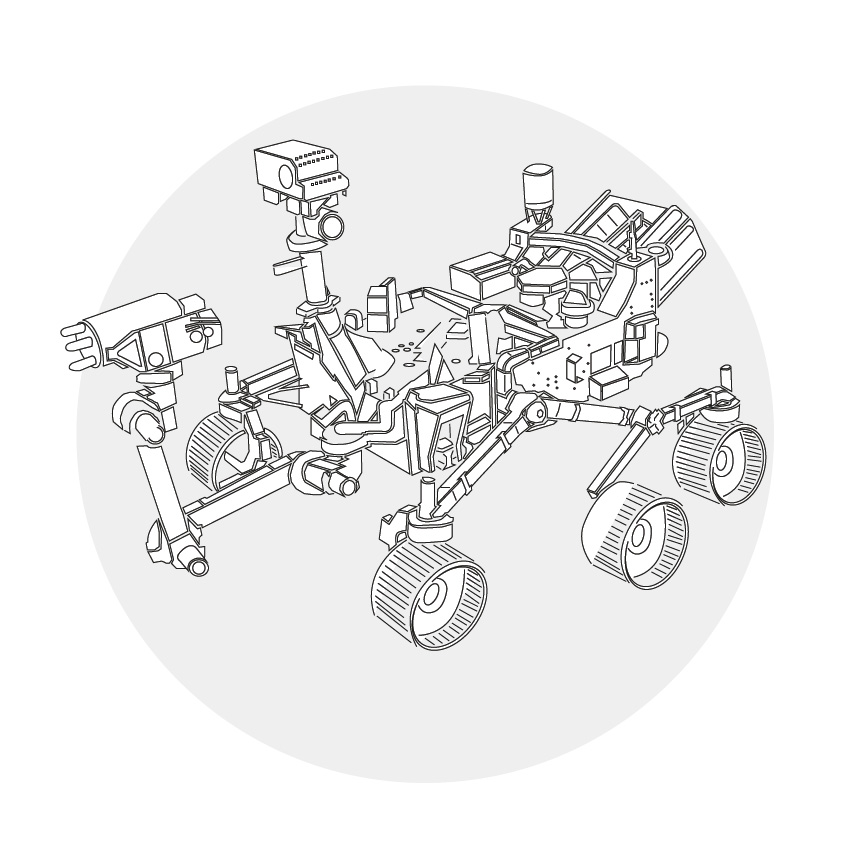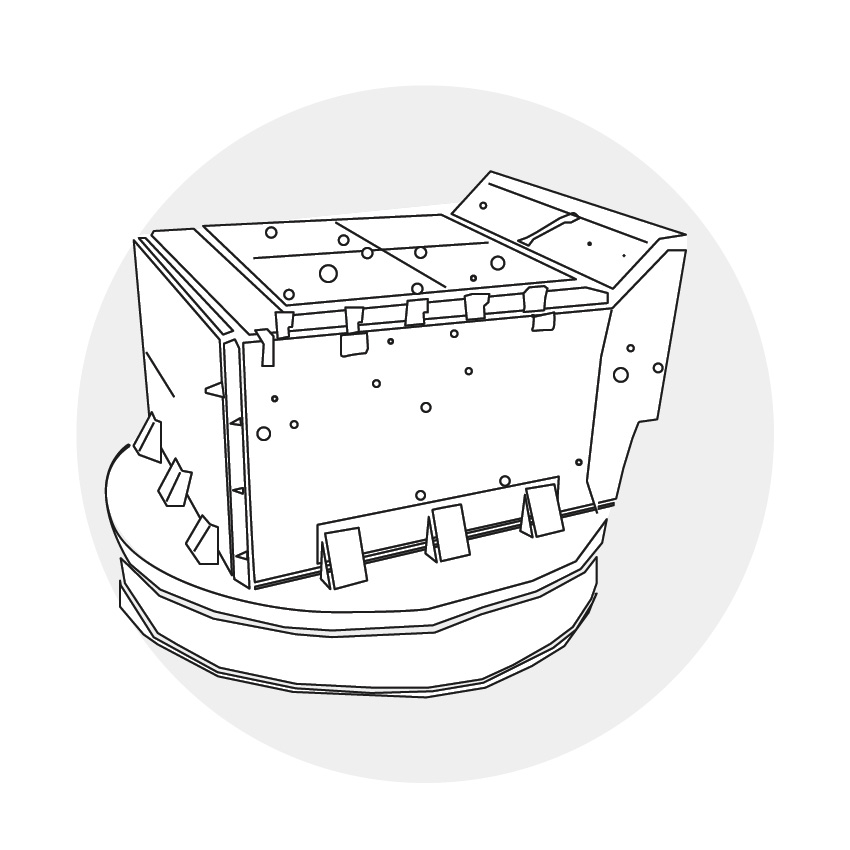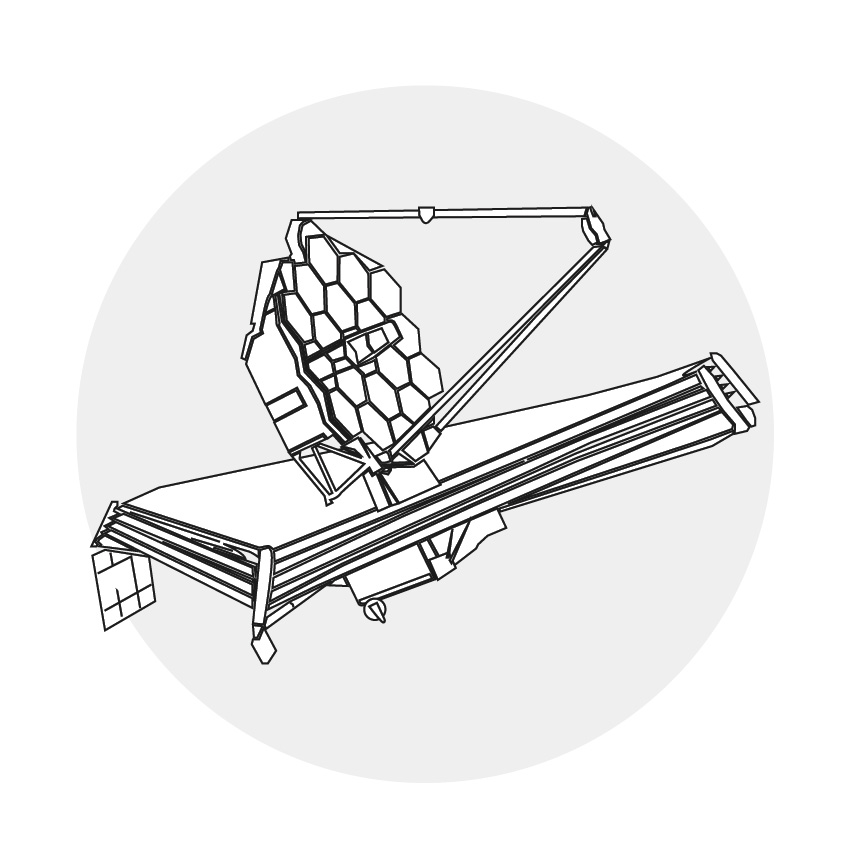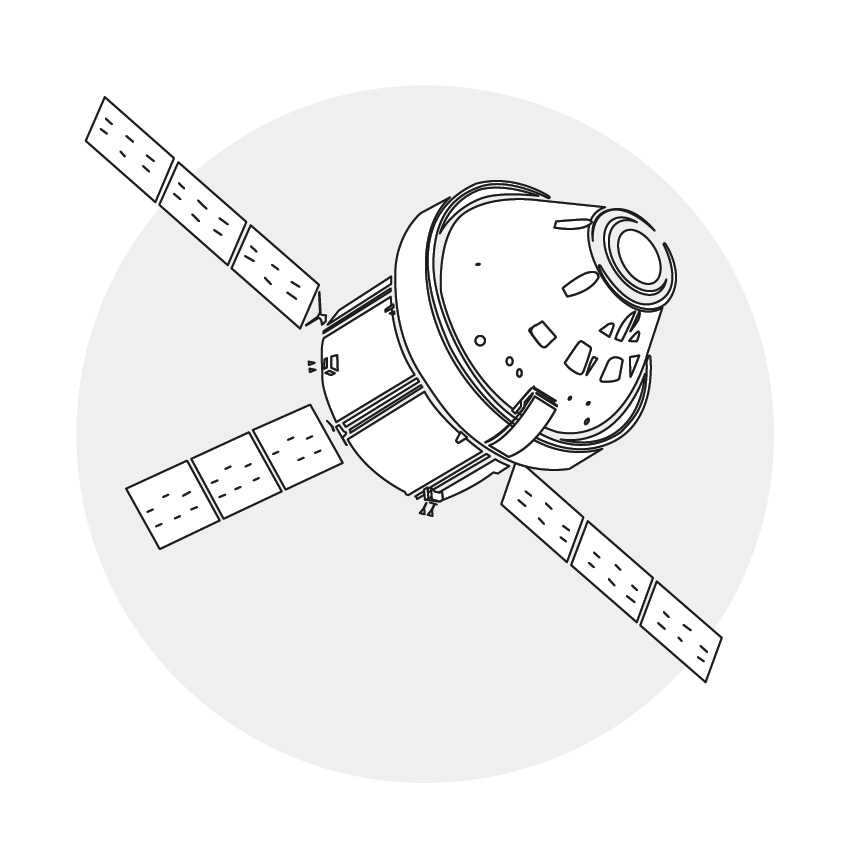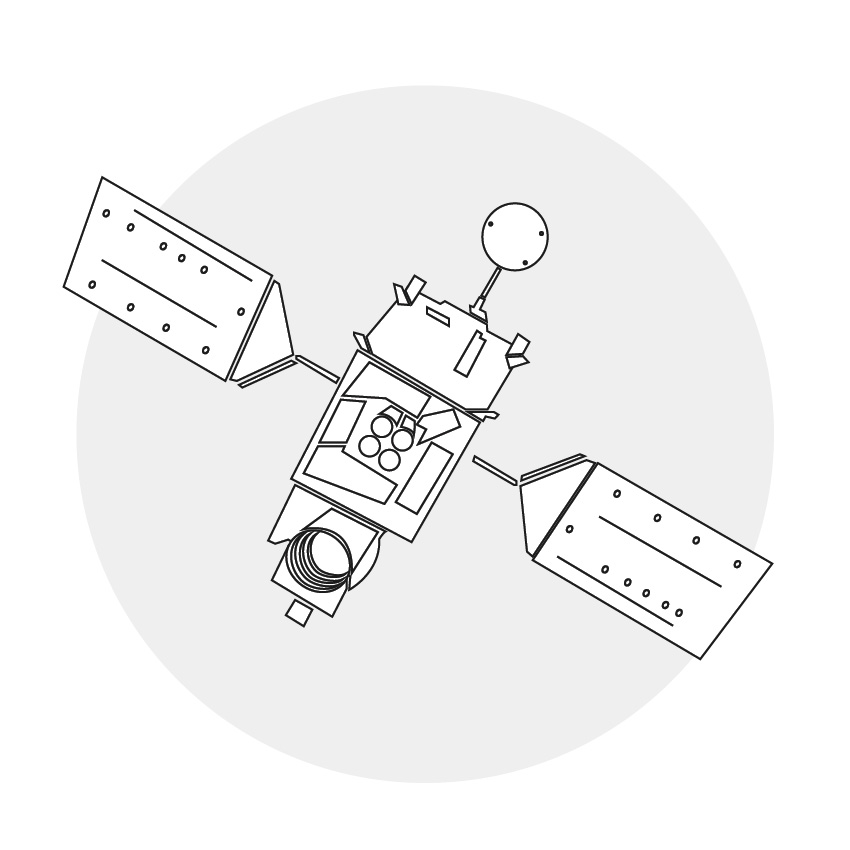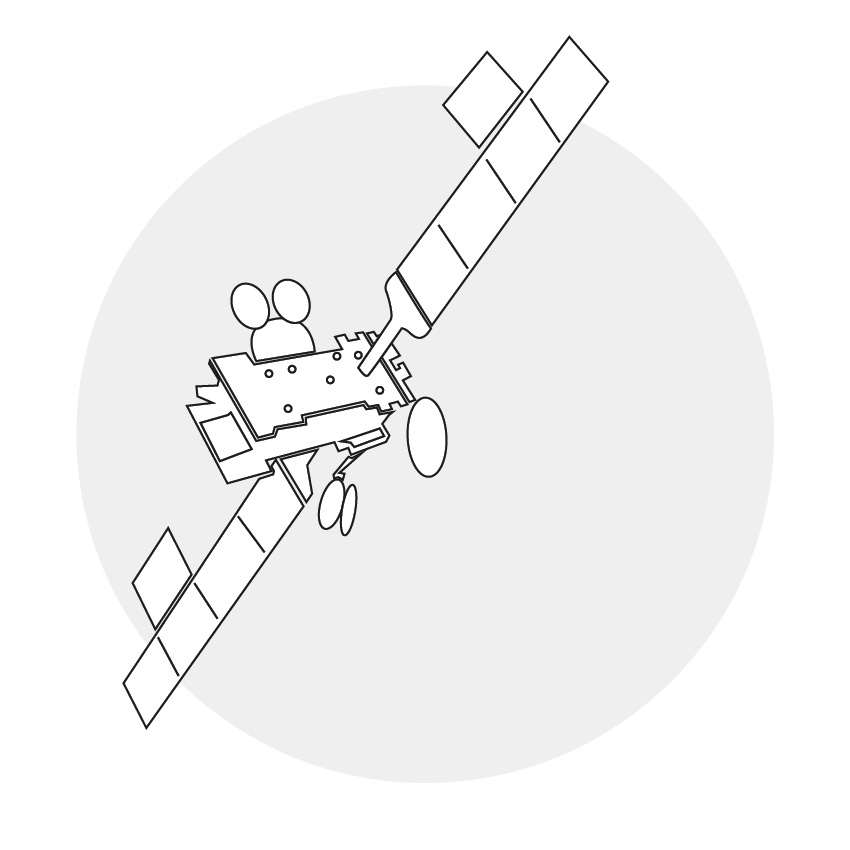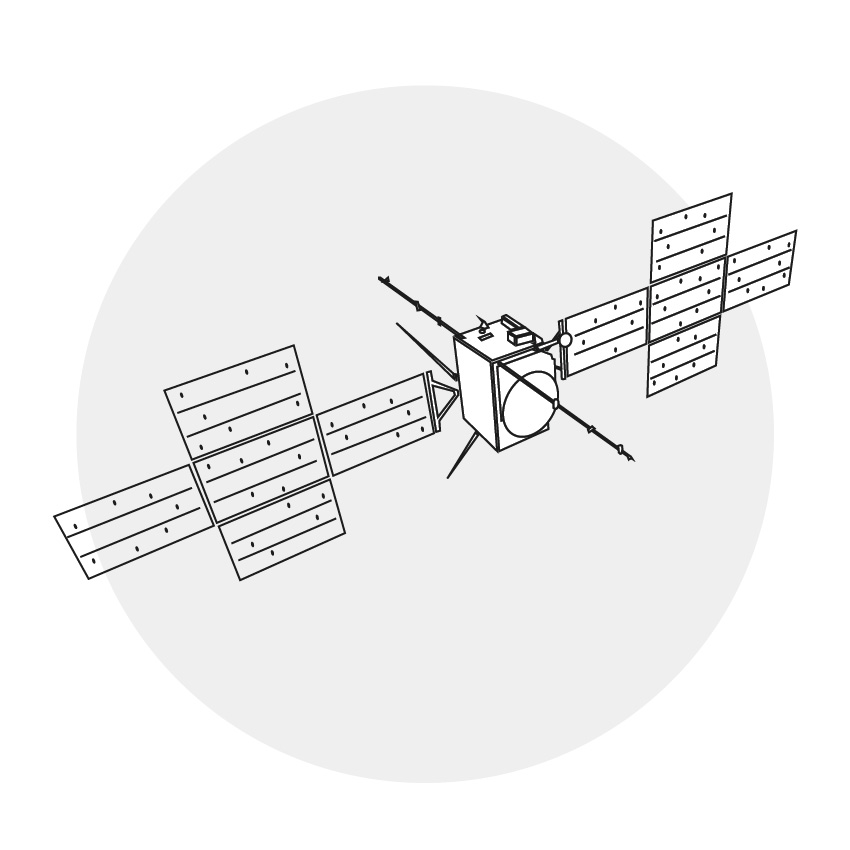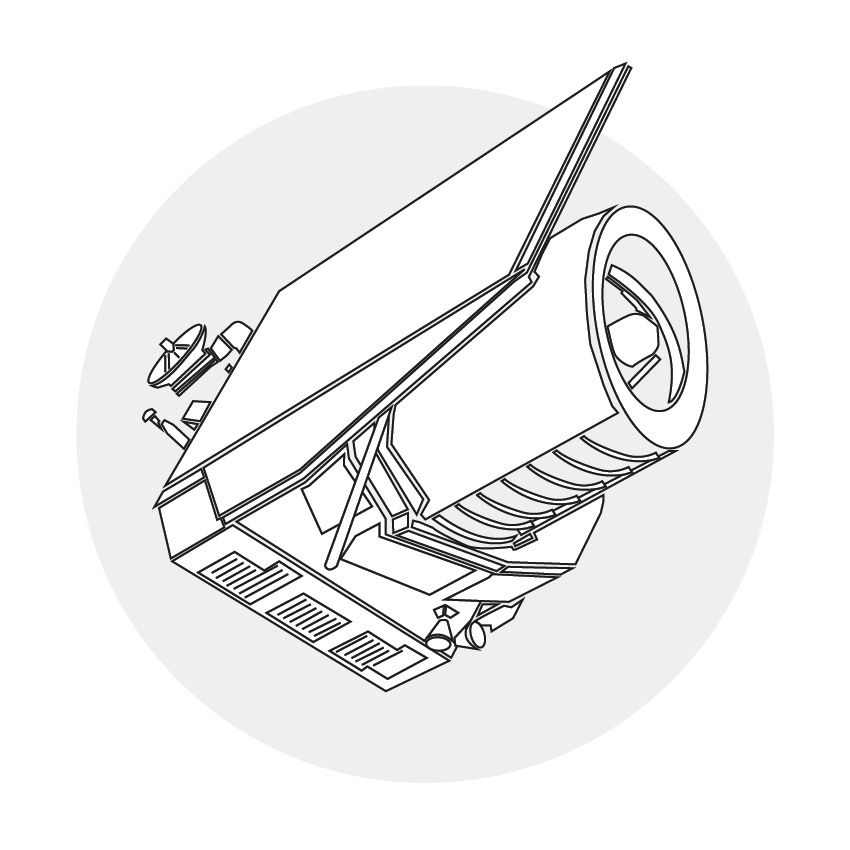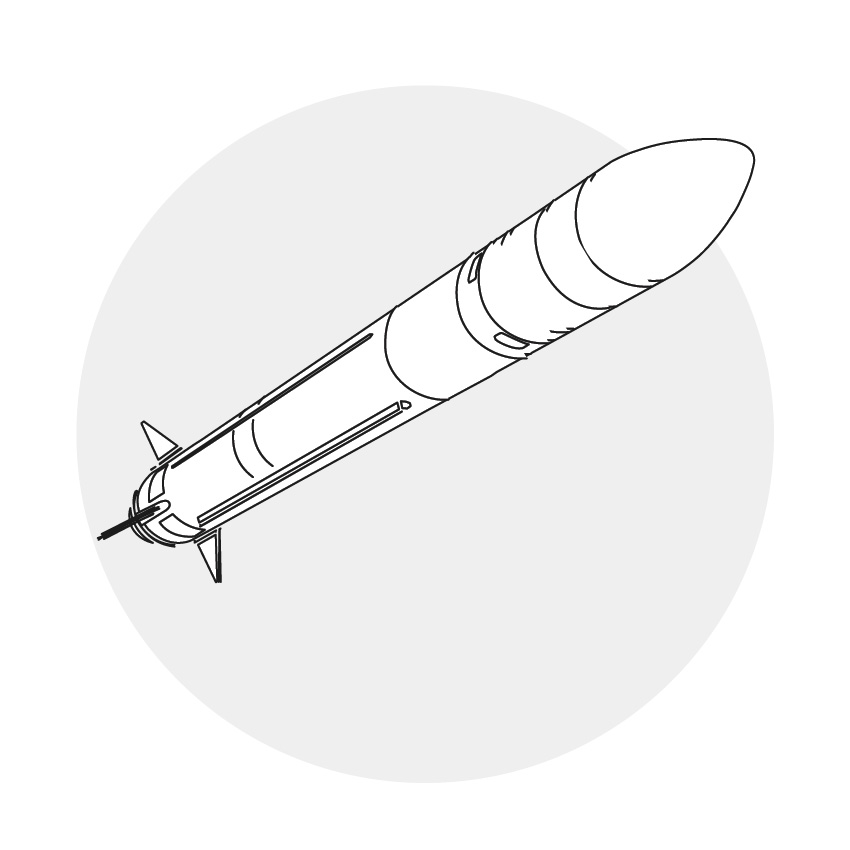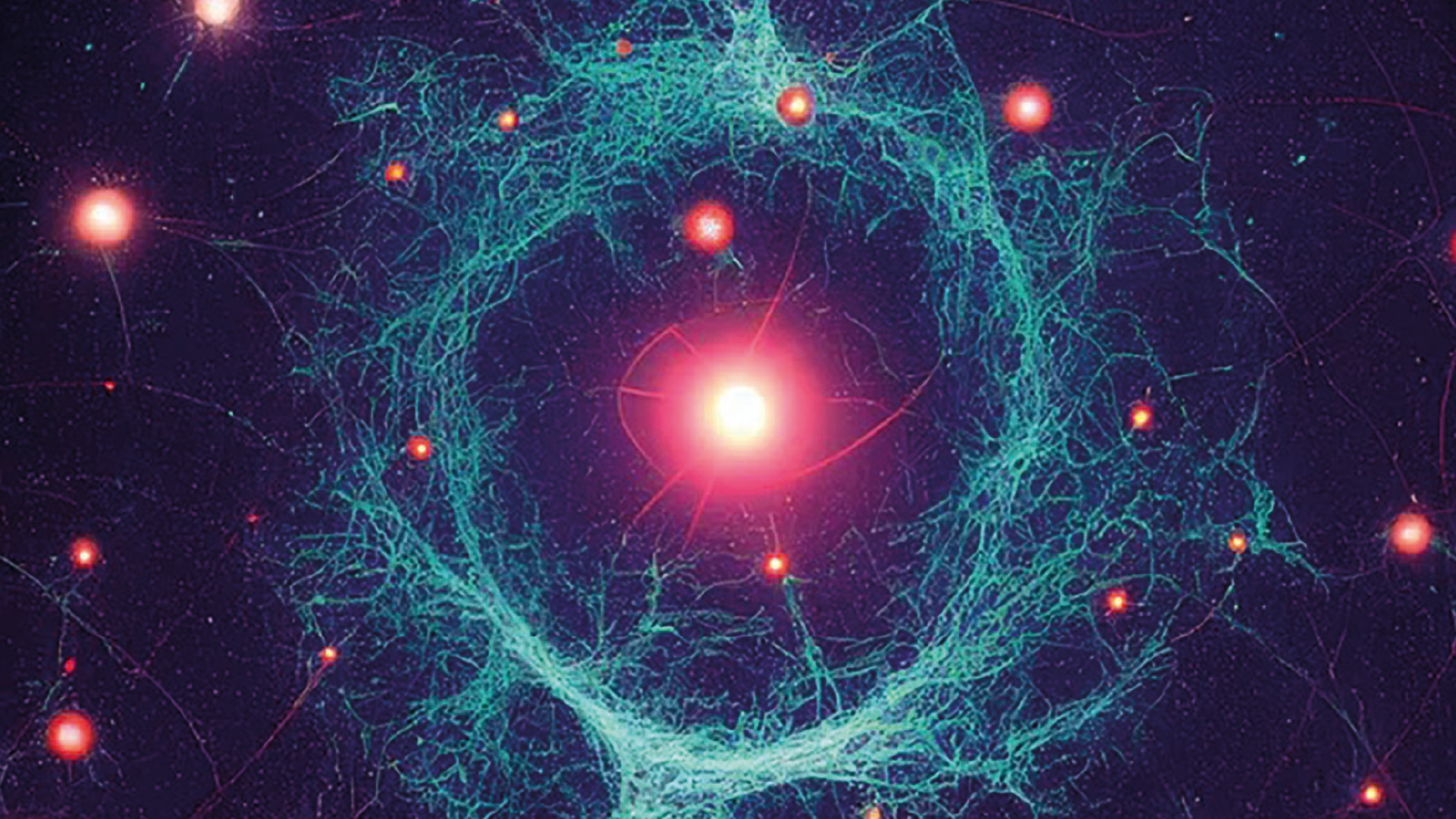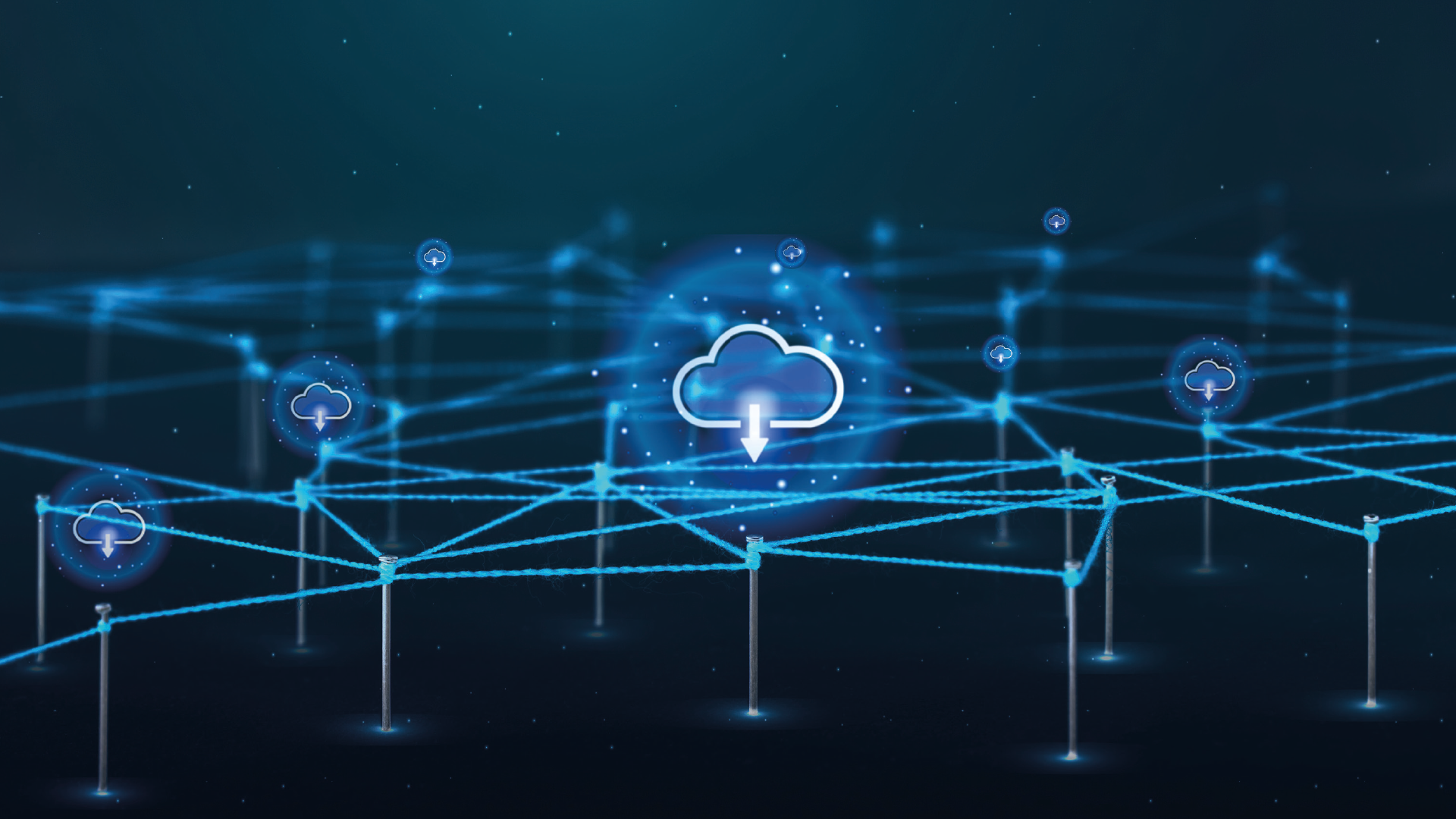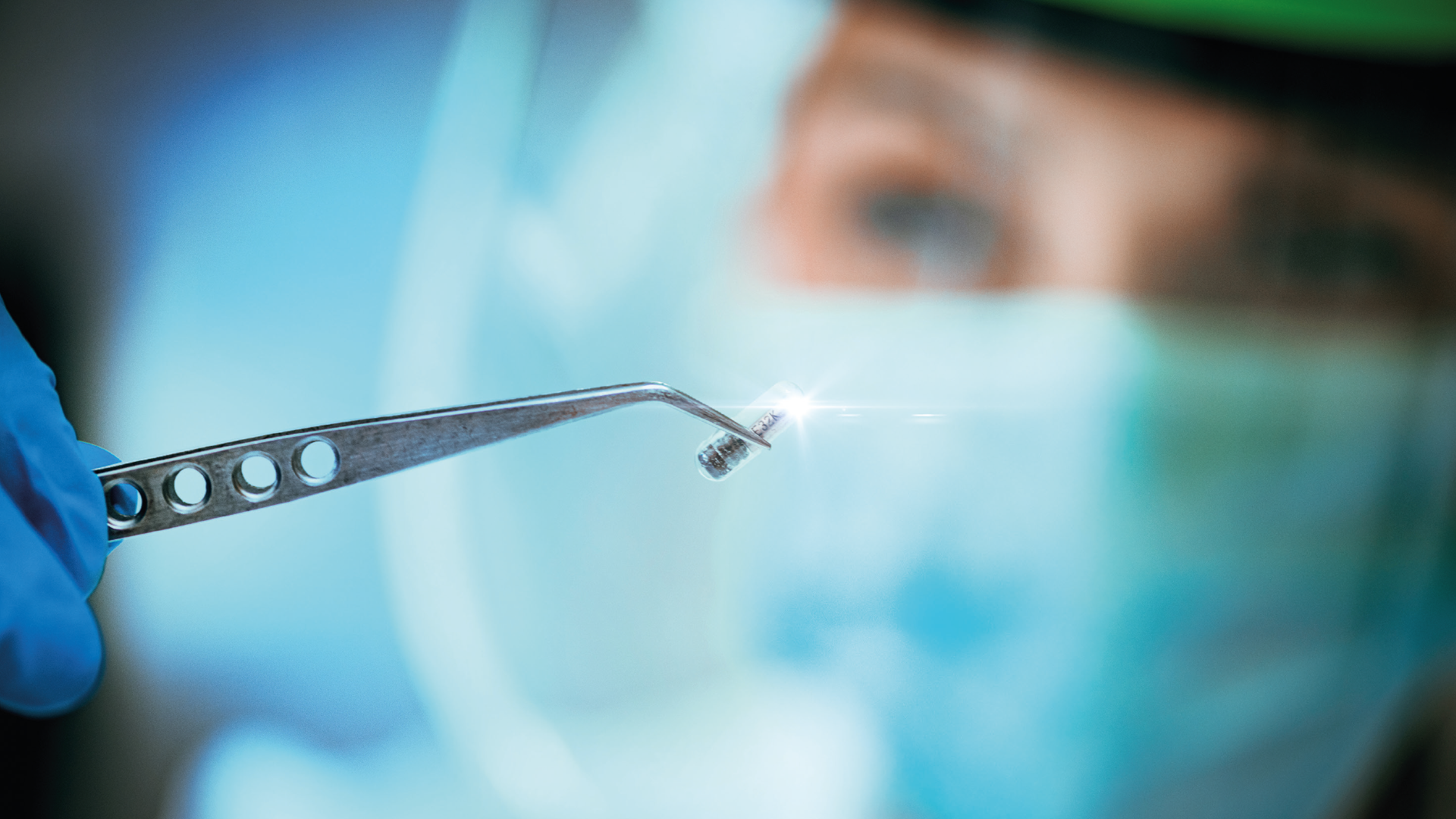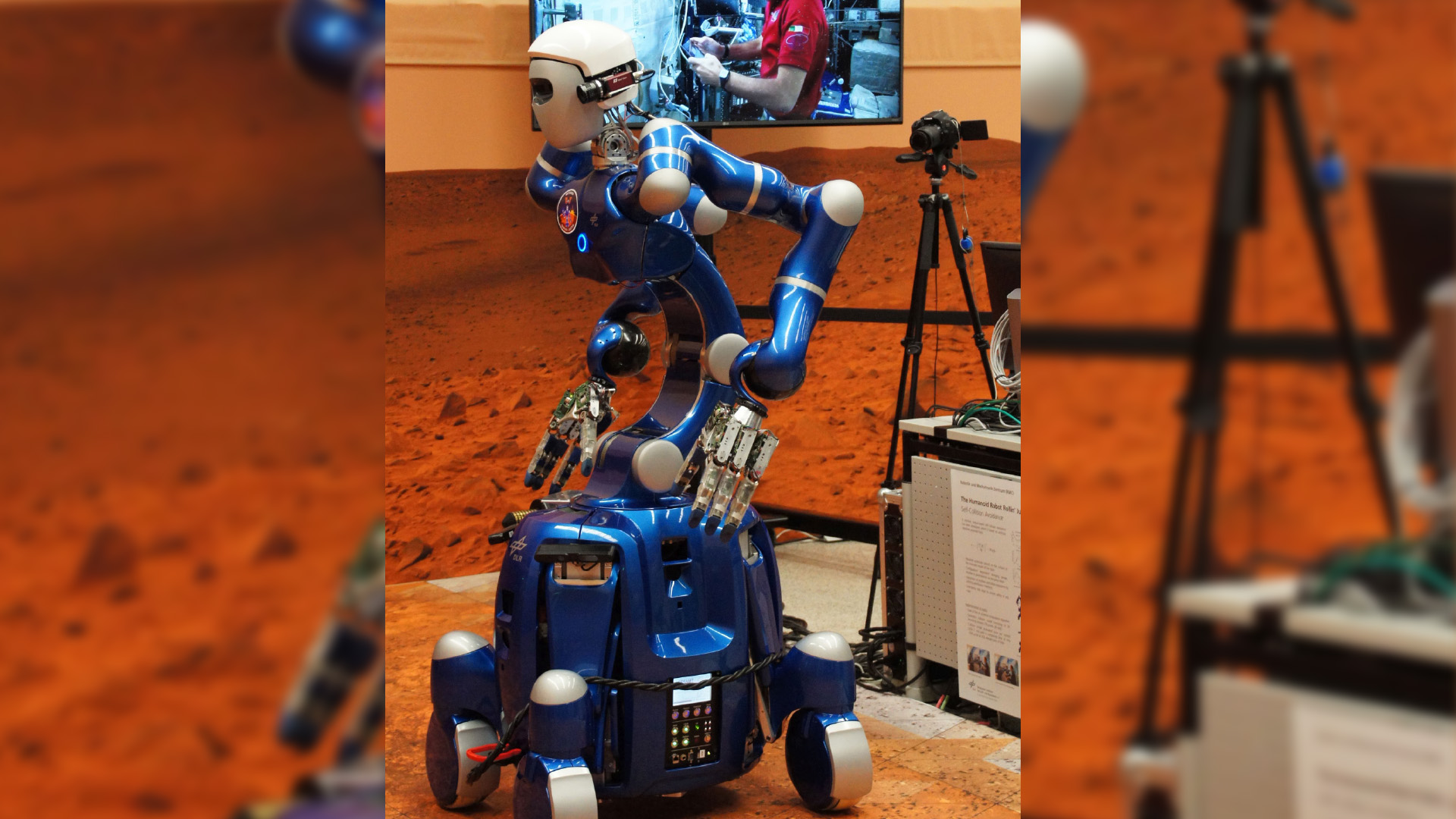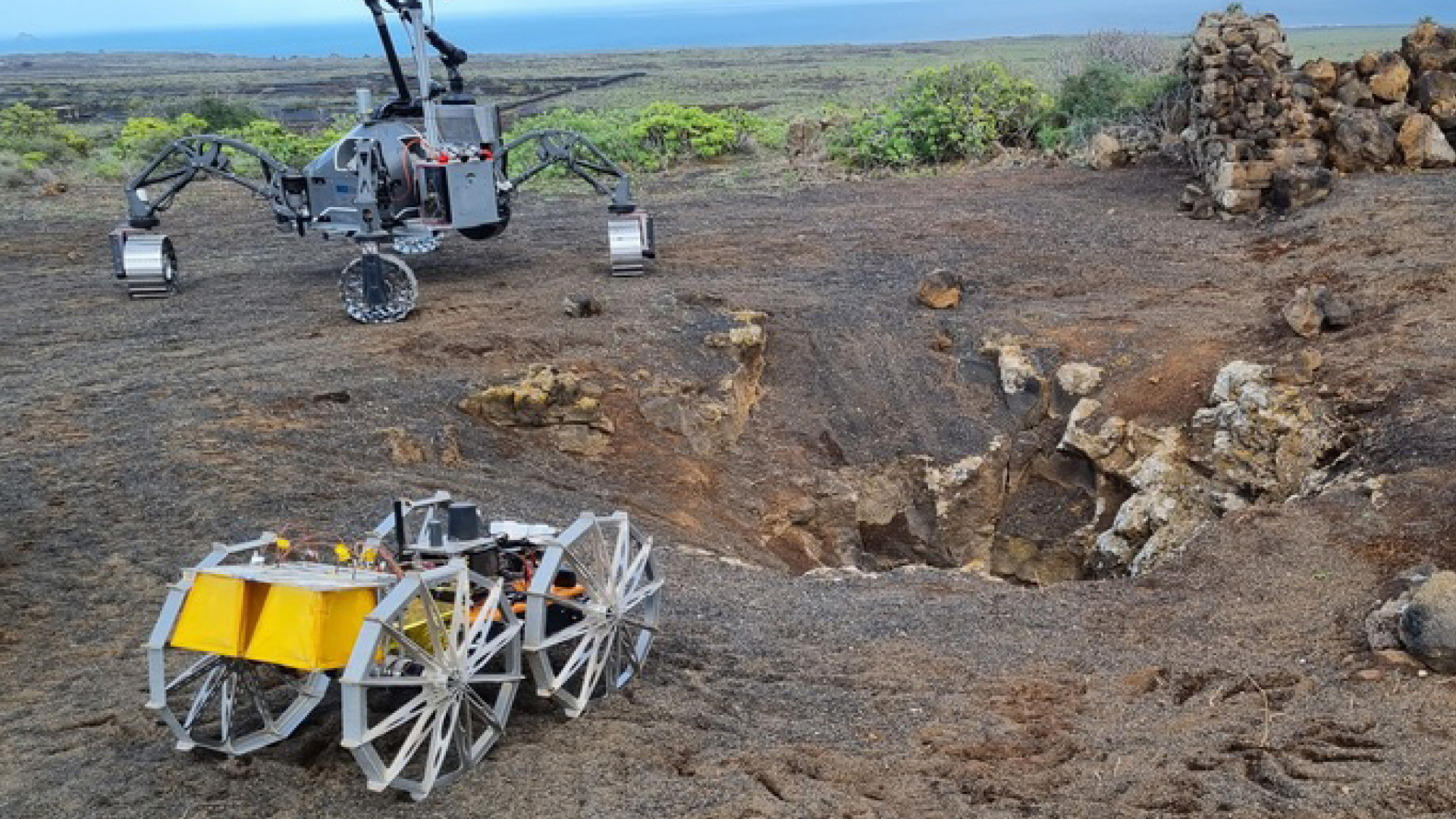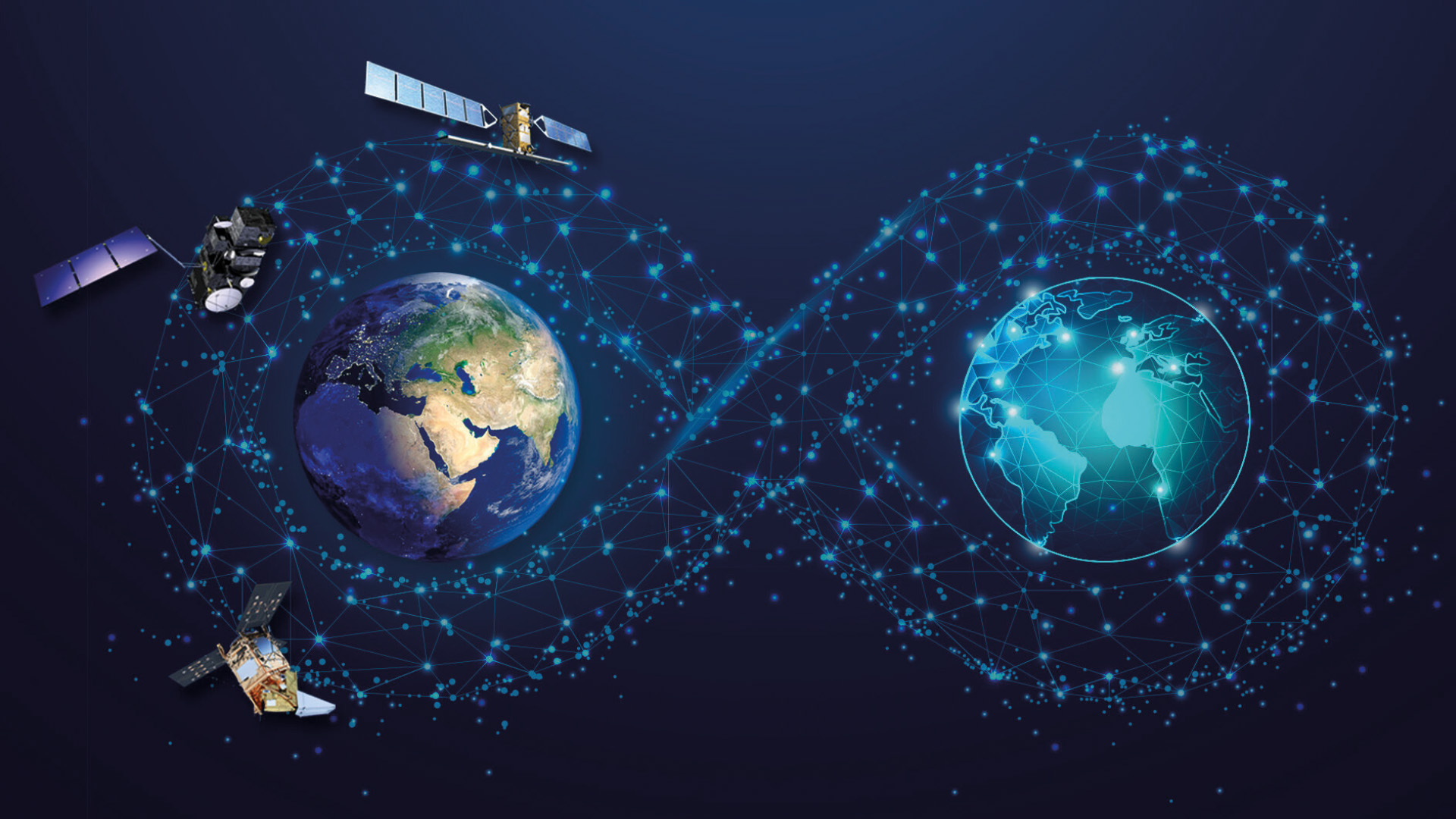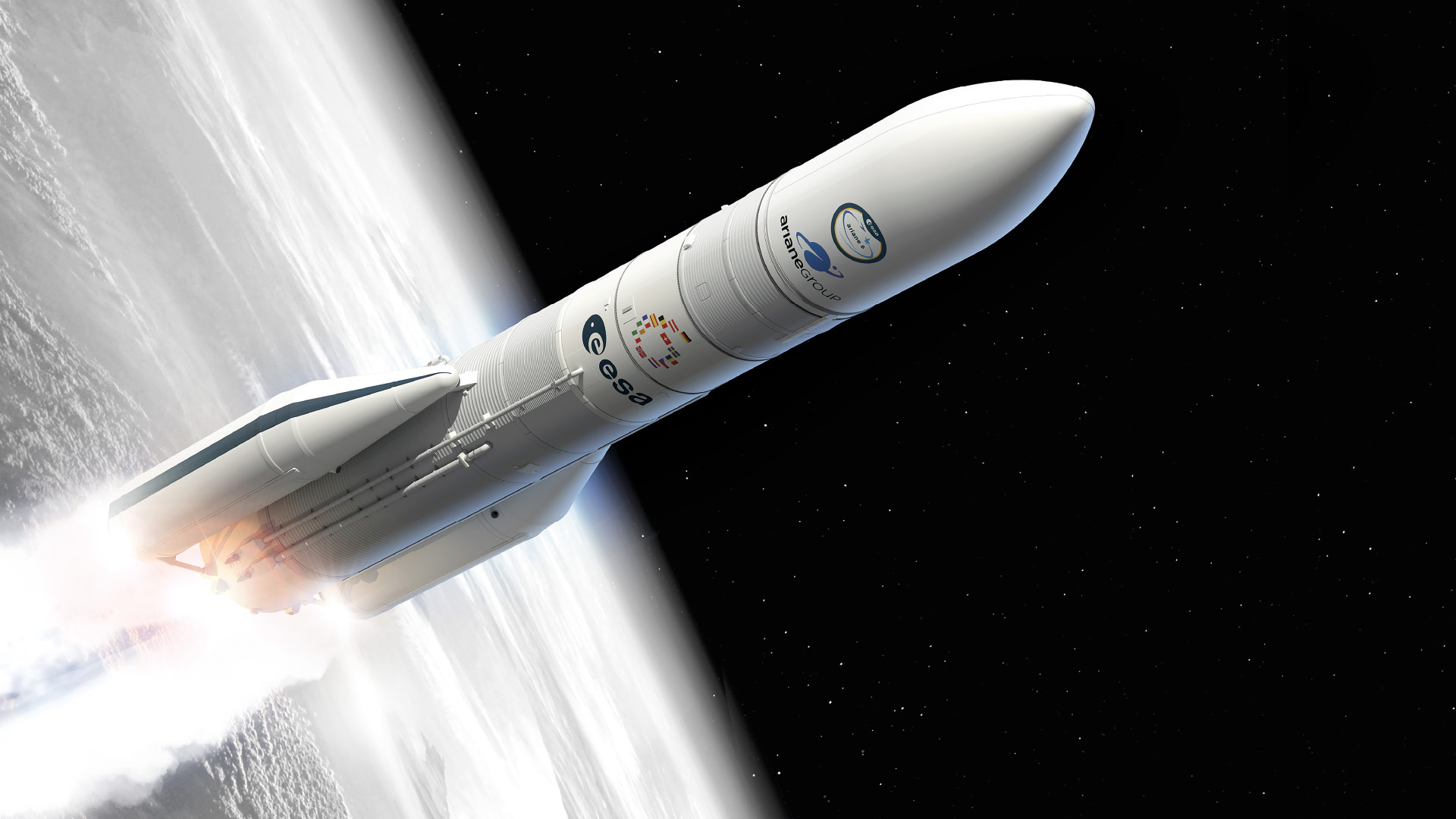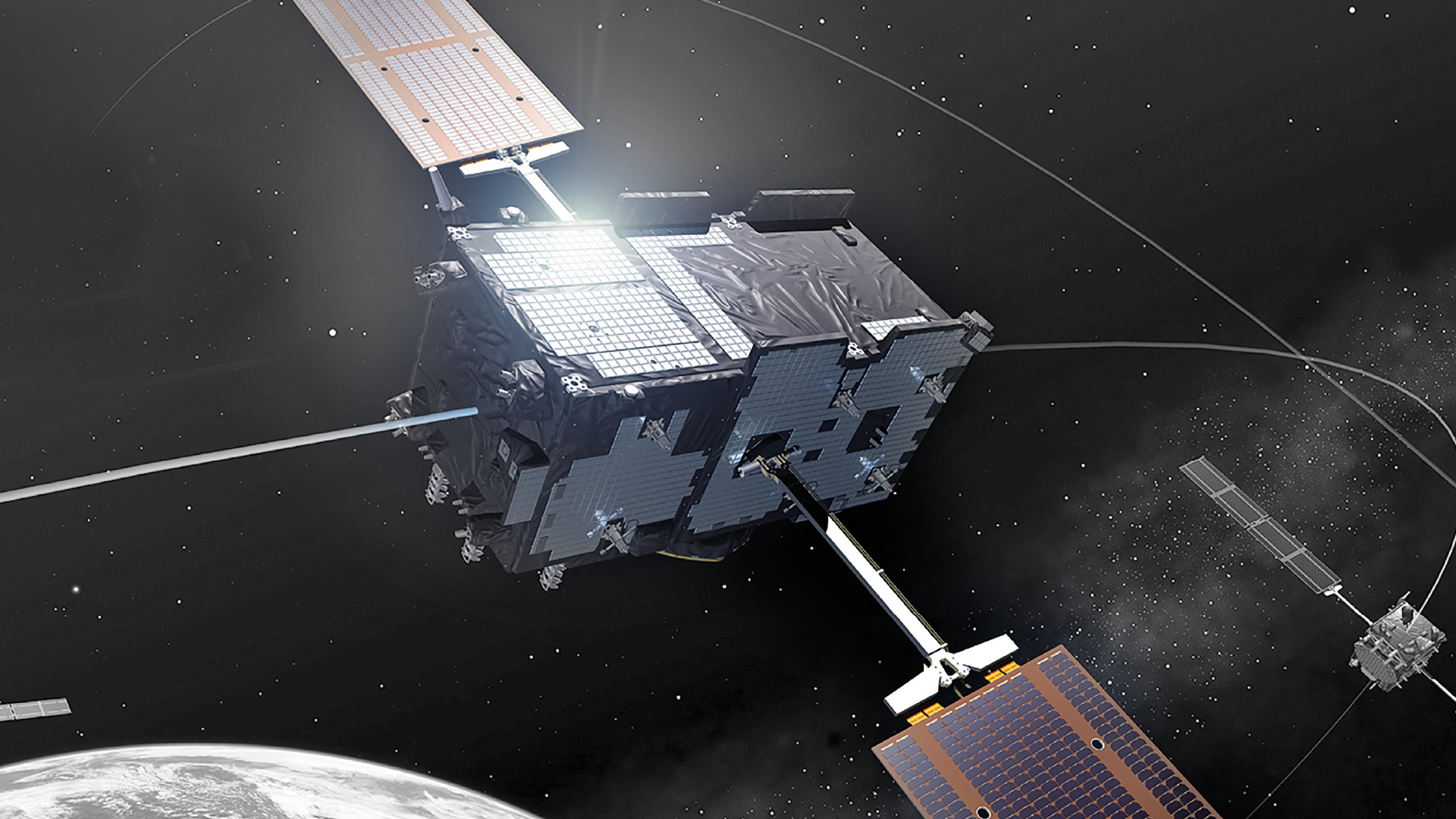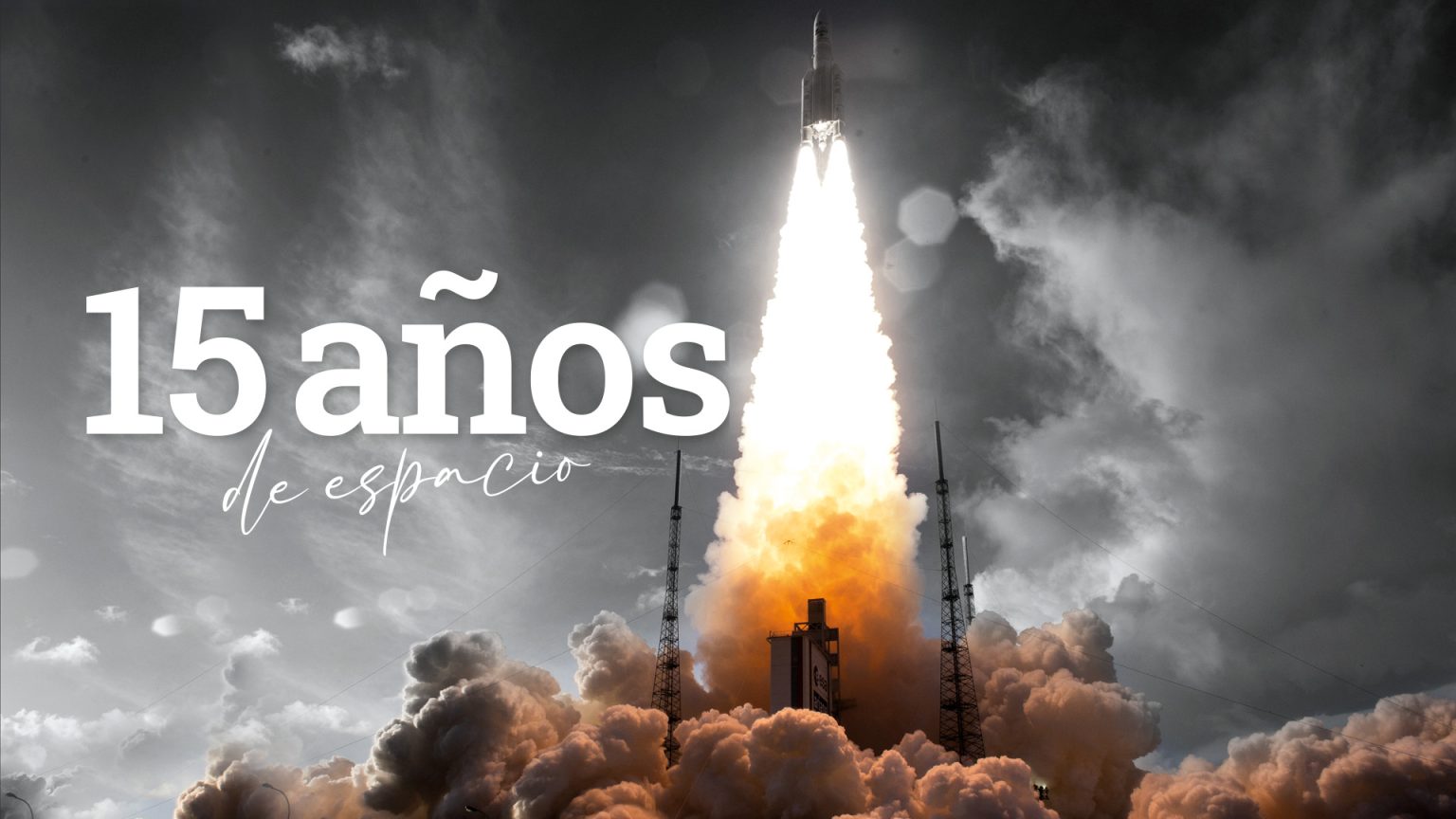The evolution of the Spanish space sector during the last 15 years has been substantial, with a significant growth in terms of investment, projects, corporate ecosystem and technological achievements. From the development and launch of satellites to the participation in international space missions, Spain has positioned itself as an emerging power in the field of space exploration and use.
These four interrelated facets that we believe are the backbone of the advancement that we have experienced are: the public bodies that provide a framework for the different initiatives—both national and European—undertaken in our country, the country’s participation in international missions, the development of companies of the sector throughout the years and the evolution of public investment and its impact on the sector.
Space sector public bodies: the AEE
Diving into the first angle mentioned above, the creation of the Spanish Space Agency (Agencia Espacial Española, AEE), which finally came into existence last year, is the most significant event in our recent history. The purpose of its creation is twofold: unifying our country’s space policies, and effective and strategically coordinate our services and actions.
The creation of this organization has undoubtedly addressed a need that, in the past, was tended to by a myriad of national and international organizations that would cause our country’s participation to be undermined. Indeed, its birth has helped Spain to, for the first time, land the leading role in a European Space Agency (ESA) mission.
The ARRAKIHS mission is set to be launched in 2030 with the purpose of studying dark matter in the universe, where the country will coordinate an international consortium that will see the participation of other nations such as Switzerland, the United Kingdom, Belgium, Sweden, Austria and the United States.
Spanish participation in international missions
As stated in relation to the second aspect referenced in the introduction, our country has extensive experience in taking part of international missions. Through ESA and the European Union’s Copernicus program, Spain has participated in the creation and deployment of satellites such as Sentinel-2, which provides high-resolution images to study and monitor Earth.
Through ESA and the European Union’s Copernicus program, Spain has participated in the creation and deployment of satellites such as Sentinel-2, which provides high-resolution images to study and monitor Earth.
In addition to having a notable involvement in the launch of satellites to space, Spain has taken part of recently launched planetary missions. The partnership between ESA and NASA has enabled Spain to contribute with its experience and technology in missions such as Mars Express, Mars Science Laboratory and Mars Sample Return.
These missions have provided crucial data aimed at understanding the red planet and have implied a clear catalyst for space research in our country.
Moreover, Spain has achieved significant breakthroughs in the field of nanosatellites and cubesats. With a reduced cost and compact size, these tiny satellites have facilitated the access to space for emerging companies and research centers.
Spain has developed and launched a number of these nanosatellites; especially by means of ESA’s QB50 program, which has allowed Spanish scientists to contribute to research in microgravity, the Earth’s atmosphere and other areas of scientific interest.
The icing on the cake of Spain’s participation in international space missions is that two Spanish persons—Aeronautical Engineer Pablo Álvarez Fernández and researcher Sara García Alonso—have been selected to join the team of ESA astronauts.
We have more than proven that we are capable of developing bleeding-edge, revolutionary technology within the space sector, and now we can also put it into practice in a variety of missions.
Spanish Space sector company ecosystem
Concurrently with this international collaboration, the private Spanish space sector has experienced a significant growth. The ecosystem of companies of the sector in our country has played a key role in the development and launch of communication, Earth observation and satellite navigation satellites. These companies have been responsible for major projects and have positioned Spain as a relevant stakeholder of the world’s space industry.
The development of our business sector has also contributed to generating quality jobs for our country. In 2009, the figure for direct space sector jobs in Spain was in the ballpark of 3,200 employees.
If we combine this with the annual turnover of space sector companies, in seven years we have gone from 834 million to over 1.06 billion euros per year, accounting for nearly 1% of our country’s GDP.
But space sector companies are not only a major economic and employment driver; they also strategically contribute to the development and safeguarding of our democratic societies.
Circling back to the concept of nanosatellites mentioned in the missions section, where Spain has been playing a major part so far, it is impossible to overlook the ecosystem that this technology is encouraging under the umbrella of New Space.
This new realm enables new company profiles to now play a major part in the space race, gaining access to a field that used to be reserved exclusively to large organizations.
Spain is one of the most important countries when it comes to technological advancements that contribute to revolutionizing connectivity and secure communications, and to fostering that this new company profile develops its full potential.
The importance of public investment for the space industry
This positive trend of investment in space programs has not always been present in our budgets. An ESA Ministerial Council took place at the beginning of last decade while the country was undergoing a serious economic crisis, and it could only contribute 83 million euros to the optional program, when during previous installments these contributions had exceeded 300 million.
Today, our country is more involved in the international missions of our continent and our companies can use and export a technology that is highly valued within the sector.
As for space infrastructure, Spain has invested in the modernization and optimization of its research centers and launch sites. The Centro de Astrobiología (Center for Astrobiology, CAB) located in Madrid is one of the most important research centers of the type in the world.
Challenges for
the upcoming years
As evidenced by these milestones (and others that had to be left out, paradoxically, due to space constraints) we have experienced a significant change during these last few years. However, the upcoming years come with new challenges that the sector will need to address through its developments. Sustainability is, without a doubt, one of the areas of greatest concern for all of us.
The space sector is an ally that offers new tools which will enable us to grow in a responsible manner in relation to our planet. A better observation of Earth and its climate changes will help us in the fight against severe weather events, deforestation and draught.
The progress in communications fostered by the satellites that we put in orbit is another tool for sustainability, not to mention specific technologies added to our spacecraft and which may, sooner or later, see applications in society so that we can all benefit from the advantages that they offer.
Interestingly, the advancement of the space sector toward a greater sustainability has highlighted a specific issue: space junk. Not only does this pose a problem for other crafts in orbit, but it also implies a threat for all of us. Having programs for active removal, fostering a controlled deorbiting, enacting a clear legislation that establishes guidelines for all space powers to abide by and developing technologies that help mitigate this problem are some of the measures that countries can implement to keep our space as organized as possible.
Another major trend that is also related to the concept of sustainability is the Satellite As A Service (SataaS) model. These full-fledged cloud-based satellite services, which do away with the need for companies to invest in the acquisition and operation of their own satellites, will help optimize both our costs and our resources.
Under this model, users can access an assortment of satellite services such as hi-res satellite imagery, remote sensing data, satellite communications and asset monitoring by paying just for the amount of data or services that they need at a given time. Moreover, the SataaS model offers flexibility and scalability, allowing organizations to manage their needs as their operations or projects grow.
Conflicts and future hazards will also see the space sector focusing on guaranteeing our safety. These threats are, at times, not intentional and external, as is the case of the meteorite that one international mission (with contributions by the Spanish industry) successfully redirected with sights on avoiding a potential collision with Earth.
This combination of aspects will provide us with detailed, real-time information for strategic and operational decision making. Detecting real threats and monitoring national borders and hotspots on the planet will be a priority for governments during the next few years.
In addition to its use in the field of security, the civilian side can also greatly benefit from ISR. The space sector will enable us to better leverage our natural resources and more effectively plan our infrastructures.
All of this will need to be supported by legislation that not only fosters the development and progress of the space sector, but also does this while guaranteeing the rights and freedoms of citizens.
Spain, as a member country of the European Union and other international organizations, is in a prime position to make the most out of the potential of space technology, while allowing its citizens to enjoy its advances in a responsible manner that is focused on the rights of each individual.
The integration of photonics in the space sector is driving substantial improvements across various key areas—especially in the communications sector.
Data transmission via optical links, as opposed to conventional radiofrequencies, offers notably superior transfer speeds, which is essential in transferring high volumes of information between space and Earth, as well as between satellites (OISL).
The integration of photonic payloads also offers improvements in terms of physical dimensions and power, which makes this technology highly attractive for use in VHTS (Very High Throughput Satellites). In smaller satellites, they can increase their communications capabilities in reduced environments.
Additionally, photonics is playing an essential role in the advancement of remote sensing and space observation systems. Onboard cameras can now capture images with enhanced resolution and precision, boosting the capabilities for the monitoring and analysis of our planet and other celestial bodies through the use of optical sensors and lasers in satellites.
In the future, photonics will also see applications in space propulsion, offering optimized systems for probes and spaceships. This laser propulsion will enable a faster and more effective space travel.
Quantum key distribution (QKD)
Land-based key distribution is bound by a physical limitation: it is currently only possible within a range of a few hundred kilometers. When seeking to distribute quantum keys between two distant points on Earth, the only possible method is via satellite. This need is what has taken this revolutionary technology to space.
QKD has a fundamental role in bolstering the cyber security of space missions. The capability of remotely establishing quantum keys—even at interplanetary distances—guarantees the integrity of critical data transmitted between satellites, probes and stations back on Earth.
The advancement of the quantum field also opens up new options in the construction of a more robust space communications infrastructure that is more resilient to potential cyberattacks. Since QKD is based on the principles of quantum physics, it offers a level of security that hampers conventional decryption methods, thereby guaranteeing the protection of operations and sensitive data in space.
Nanoscience, also known as microscience when working at microscopic scales, is yet another catalyst that is transforming the space industry. The application of nanomaterials in the construction of lighter, resistant materials implies a new paradigm in the manufacturing of space components.
Not only does this reduce the weight of spacecraft, but also improves their durability and resistance to the extreme conditions in space, allowing for long-duration space missions.
Furthermore, nanoscience plays a key role in the development of miniaturized sensors and devices for space exploration. Nanosatellites and nanorobots can carry out missions with more agility and versatility, facilitating data collection and space research.
Likewise, photonic circuit boards allow for the transmission of vast quantities of data at ultra-high speeds via optical links, while enhancing the precision and sensitivity of optical sensor systems.
One of the major trends in the space sector is bestowing satellites sent to space with better information processing capabilities.
Giving them faster response capabilities can improve the transmission of data back to Earth and even assist with their self-management: managing their own power, monitoring the status of their systems and making decisions, such as activating backup routes without depending on a control center back on Earth.
In the future, data processing will also impact space communications. The implementation of real-time processing techniques will allow for a more efficient bandwidth management, enhancing data transmission from and to space. This is crucial for maintaining constant connectivity with space missions, which guarantees a fast and reliable communication.
In the field of space navigation, data processing will be essential in calculating paths, preventing collisions and optimizing vessel trajectories. Advanced navigation algorithms will allow for higher maneuvering precision and a better control of spacecraft positions.
Digital Economy and Space
El down stream
This transformation has led space activities to no longer be limited to a handful of countries with the capability of garnering significant public resources, and for private investment to flourish.
As a result, companies have emerged that operate space infrastructure and manufacture and sell products or services that are directly related to space technologies or with the signal or data collected by satellites, which has been dubbed the “downstream” segment.
This sector has diffuse boundaries that are difficult to quantify, but its most important growth vectors are communications, satellite navigation and Earth observation techniques.
Downstream applications range from weather services, the study of climate change, environmental protection, emergency response and the mitigation or risks related to natural disasters, to supporting transportation, logistics operations, internet access, television broadcasting and offering access to voice communications in remote areas.
A market research study prepared by the European Union Agency for the Space Programme (EUSPA) showed that the number of devices equipped with positioning systems will rise from 6.5 billion in 2021 to 10.6 billion in 2031. And that the downstream business linked to global positioning services and devices will grow from 199 billion euros in 2021 to 492 billion in 2031.
For its part, the market of Earth observation data and services is growing steadily and is expected to double its size in the next decade, increasing from approximately 2.8 billion euros to 5.5 billion.
Access to the data provided by these constellations is partially public, and both companies and institutions are using it to develop applications and services. As an example of this, every time a natural disaster occurs anywhere in the world, the authorities can access the collected images to assess the situation, calculate the impact of damages and determine the best course of action.
Likewise, products are developed based on the collected images to reduce risks linked to climate change or potential natural disasters, studying in advance how a city or country might be affected by floods, wildfires, earthquakes and tsunamis to make decisions and implement measures to reduce their impact and save lives.
In the case of Galileo, the number of commercial applications is immense and ever growing. Some of them are related to air transportation, which demands a significant precision to plot efficient flight paths or perform landings and takeoffs under poor visibility.
The Internet of Things (IoT) will also increase the demand for all of those services and give a renewed boost to the downstream segment. In Europe, companies are already emerging whose business plan is based on offering connectivity to the millions of sensors that will go online across the world.
Smart cities, industry 4.0, smart vehicles and roads... everything will be connected. So will agriculture, where sensors will facilitate a precise and systematic monitoring of parameters such as soil moisture, radiation levels or any other factor that affects the crop and helps decide when to sow or harvest, for example.
AI Powered Rovers
and satellites
Artificial intelligence (AI) is driving a new industrial revolution that will affect all aspects of the economy, space included.
One of the areas where AI will prove essential will be the management of large satellite constellations.
Where, until now, the adjustments prior to the commissioning of a satellite and its subsequent maneuvering have been performed manually, it will become increasingly necessary to count with AI powered applications that automate and simplify the vast amount of tasks required to control hundreds or even thousands of satellites that must fly in a coordinated manner while avoiding potential collisions with other satellites or debris from other missions.
The ultimate goal is to reduce the workload of operators to gain efficiency and strengthen the safety and service life of the systems.
The use of AI can also help analyze the vast amounts of data collected by satellites and offer the possibility of processing them directly aboard the satellites. Moreover, it allows the quality of processed images to be enhanced and enables the discovery of new methods to detect and track objects on Earth’s surface.
Reinforcement learning techniques allow for a better control of satellite orientations to detect any object on Earth, such as particles and plastics in our oceans.
En relación con esto, la Agencia Espacial Europea (ESA) financió en 2022 más de una decena de proyectos para estudiar cómo se pueden aplicar los últimos desarrollos de IA y avances que se están produciendo en la computación para contar con satélites más reactivos, ágiles y autónomos.
In line with this, the European Space Agency (ESA) funded in 2022 more than ten projects to study how the latest developments in AI and the advancements taking place in computing can be applied to achieve more reactive, agile and autonomous satellites.
Some of the initiatives that were selected analyze how AI powered satellites could more effectively detect methane leaks and manage disasters from space. Other projects involved researching how smart satellites could support Moon exploration activities, achieve more independent lunar vehicles or even assist spacecraft in navigating autonomously in unknown environments.
Though most of these applications are still in development, some of them are already being deployed. For example, ESA has used them in rover obstacle avoidance and in making downloading the data collected by these vehicles more efficient.
The Hera mission, whose objective is to redirect an asteroid, also uses it to navigate as an autonomous vehicle would, analyzing the data collected by its sensors to understand what is going on around it and make autonomous decisions. Overall, AI offers a wide range of possibilities that will also serve to support scientists attempting to detect planets that are able to harbor life.
Most industries use so-called “digital twin” models to replicate systems, machinery or vehicles, know their status and analyze how they will respond if their configuration changes or if they are subject to a certain level of stress.
The space sector has gone one step further. European scientists have posited the development of a digital twin of planet Earth and are now contemplating the applications of this idea.
Fed with Earth observation data and an assortment of available land measurements, this twin would allow for visualizing and predicting human activities, the planet’s health and performing all kinds of simulations and forecasts.
In 2020, ESA already launched precursor activities to explore the scientific and technical challenges that developing this solution would imply, encompassing the monitoring of forests, bodies of water, polar caps, food production systems, the oceans and the climate.
In 2022, the European Commission officially launched the project to develop the idea with its project Destination Earth (DestinE), which brings together the European Space Agency (ESA), the European Centre for Medium-Range Weather Forecasts (ECMWF) and the European Organization for the Exploitation of Meteorological Satellites (Eumetsat) with the purpose of developing a highly precise digital model of the planet. The first results are expected to see the light this year and the full Earth twin could be ready by 2030.
A new era for
launch and cargo vehicles
2022 saw a record 186 space launches—41 more than in 2021—, which evidences the era of growth that this segment of the space business is experiencing.
The launch vehicle market experienced a shift in the last few decades, where we have seen the United States transform access to space into a service that NASA could outsource instead of having to develop its own spaceships and launch vehicles. With this in mind, it implemented the famous COTS program—a milestone that implied a turning point for the industry.
Thanks to it, in 2012 and 2013 the Dragon and Cygnus cargo ships would, for the first time in history, provide a private cargo transport service to the International Space Station. And all of this at a more competitive cost and using innovative solutions such as reusable rockets an idea that would revolutionize the sector.
Fast forward one decade, in 2023 the European ministers gathered in the Space Summit held in Seville decided to follow this example and give the space business in our continent a more competitive outlook, preparing ESA to start demanding launch services from private companies.
The purpose of this was to address the growing delays in the development of new launch vehicles and to move towards a liberalization of this area, which would be served, at least partially, by various providers who would compete to provide the service.
Later, ESA commissioned the first commercial cargo program and set as an objective to have a private company resupply the International Space Station by the year 2028 and, as a subsequent step, to also address the transportation of astronauts.
The decision shook the foundations of companies in the small launch vehicle market which, until now, aimed to serve the demands of companies looking to put small loads in orbit that would not be suitable to be launched at a competitive cost in large launch vehicles. This opened up the opportunity for them to manufacture cargo vehicles and study the development of larger launch vehicles during the next few years.
After the success of EUTELSAT QUANTUM, the new generation of active antennas has led to new applications such as the ambitious SPAINSAT NG satellite. The first few developments are already present in Hispasat 36W1, the IRMA aboard SPAINSAT and the active antenna aboard GAIA.
The Spanish space industry has a pioneering, relevant role and will undoubtedly revolutionize satellite communications, allowing for the reconfiguration of active antennas while in orbit, which will provide maximum flexibility and mitigate potential interferences, whether intentional or otherwise.
Copernicus is the European Earth observation program par excellence. It supports actions in the following realms: atmosphere, sea, land, climate change, security and emergencies. This program accelerates the modernization of infrastructures, the provision of world-class services, the training of artificial intelligence and the analysis of Big Data.
It is the number one provider in the world of space data and information—over 20TB per day, for free and openly available to all users. The LSTM (Land Surface Temperature Measurement) led by Spain is currently in development.
Galileo is the European Union’s (EU) own Global Navigation Satellite System (GNSS). Not only does it provide positioning and time information with positive implications for many European services and users, but it also allows users to know their exact position with higher accuracy than other available systems. It offers a freely accessible positioning and timing service.
It also offers an encrypted service designed for a higher strictness and availability of satellite communication security.
It can also be used to locate persons in emergency situations. Moreover, Galileo contributes to the development of other areas of application such as self-driving and commercial drones.
Toward the development of Galileo’s second generation, GALILEO SG, ESA and the European industry at large are hard at work creating ultra precise atomic clocks, system test beds, mission and ground control segments and, naturally, the satellites that will make up the constellation a project where the Spanish industry plays a major part.
IRIS2 is the EU’s new satellite constellation to face the challenge of providing secure connectivity in the digital age. It will offer enhanced communication capabilities to government and corporate users and address connectivity dead zones thanks to its high-speed Internet broadband.
The purpose of this radar-equipped Spanish satellite is not only to cover needs related to security and defense, but also others related to the civil sector. It can obtain over 100 daily images with resolution of up to one meter whether by day or night, regardless of weather conditions.
We all became acquainted with its capabilities in disaster scenarios during the recent La Palma eruption.
The PAZ-2 satellite is the continuation of this program, which will address the new operational requirements of our Armed Forces with a resolution that is up to 16 times higher.
Space Situational Awareness (SSA) is an European Space Agency (ESA) program aimed at supporting Europe’s access to space and its independent use by delivering timely and precise information about the space environment and, more particularly, about possible threats to European infrastructure whether in orbit or on the ground.
Its three fundamental pillars are Space Weather (SWE), Near-Earth Object (NEO) monitoring and Space Surveillance and Tracking (SST).
